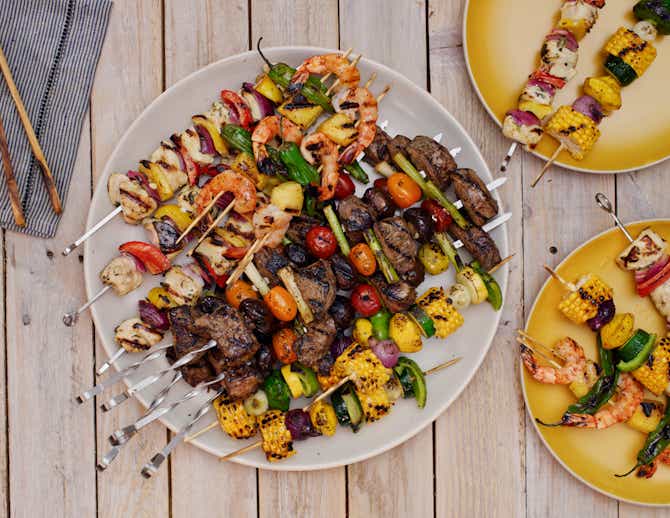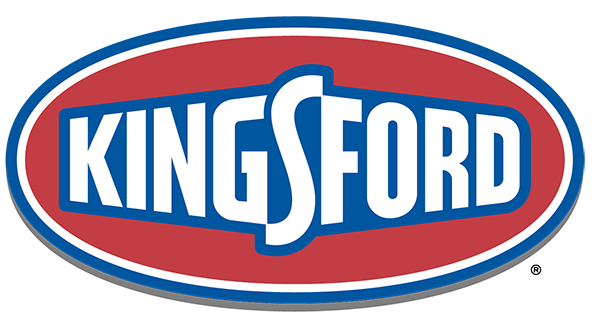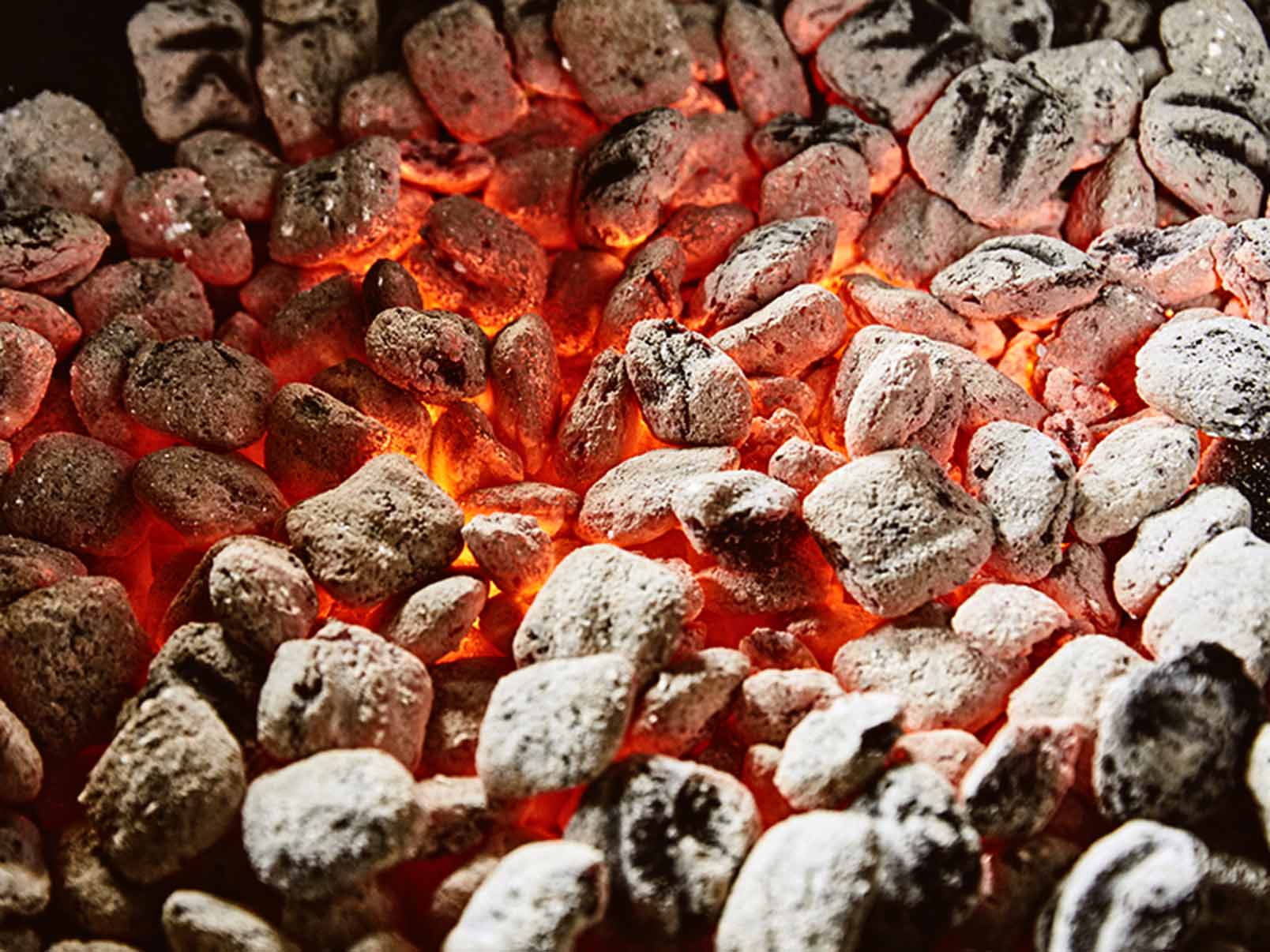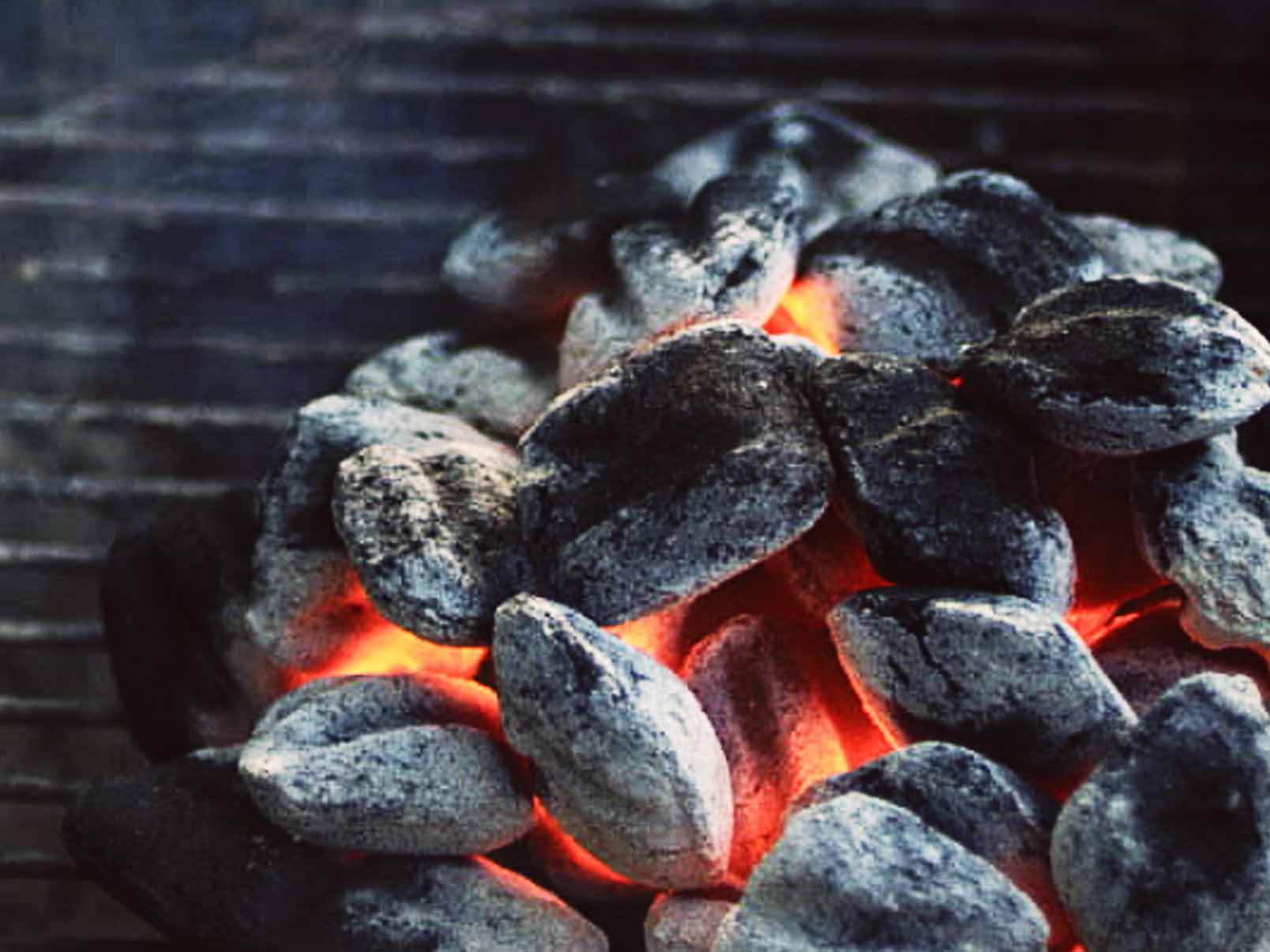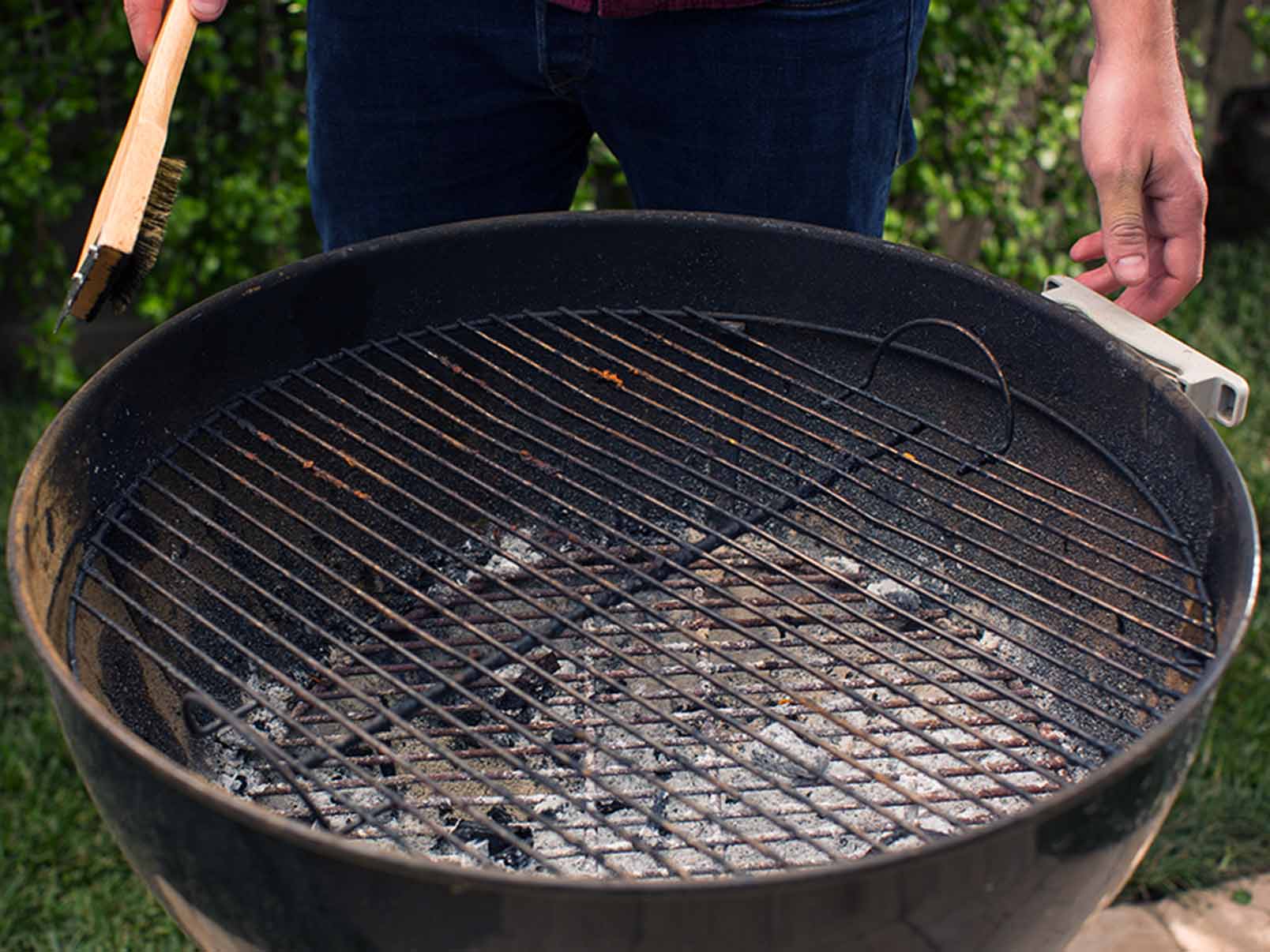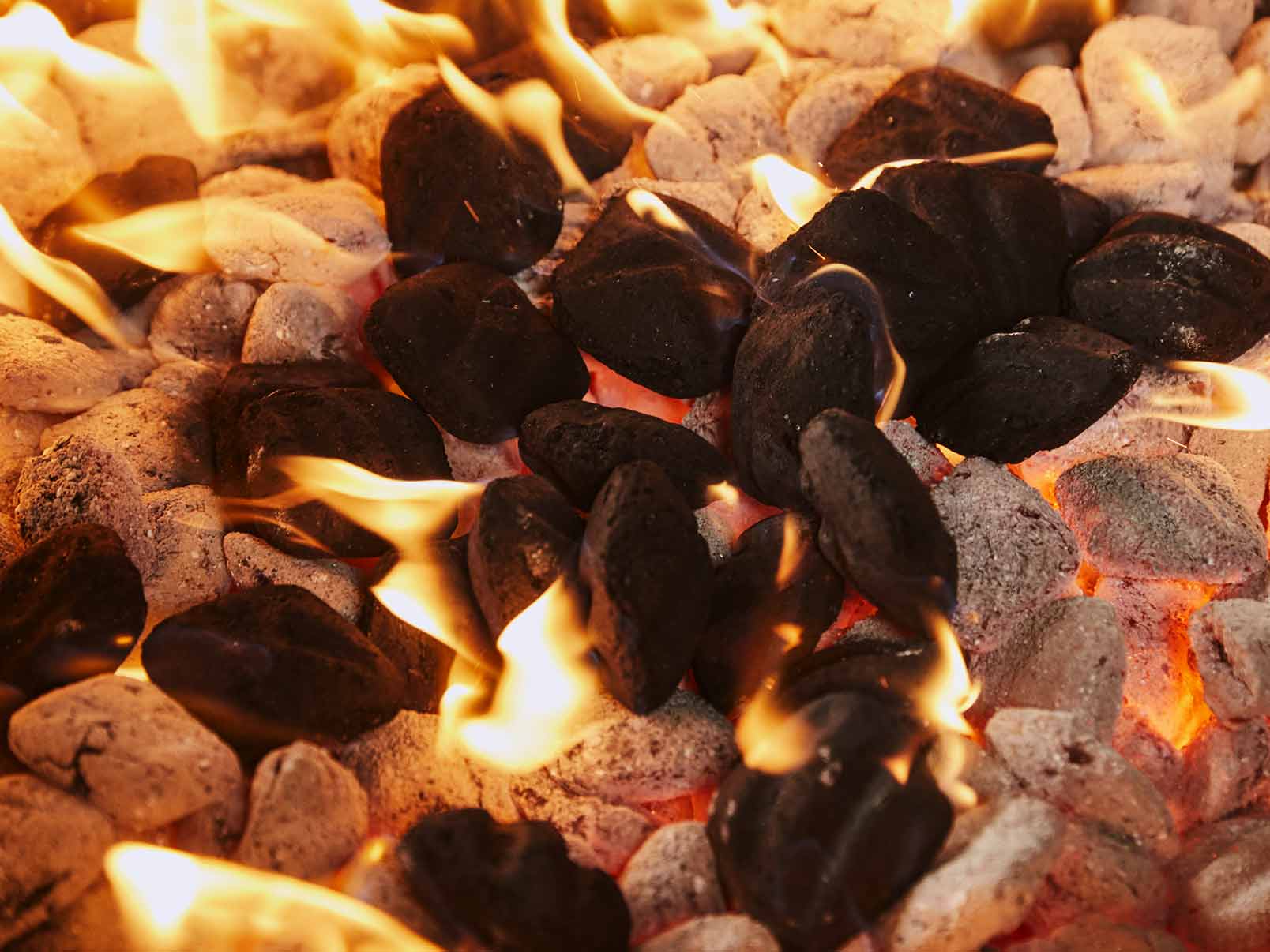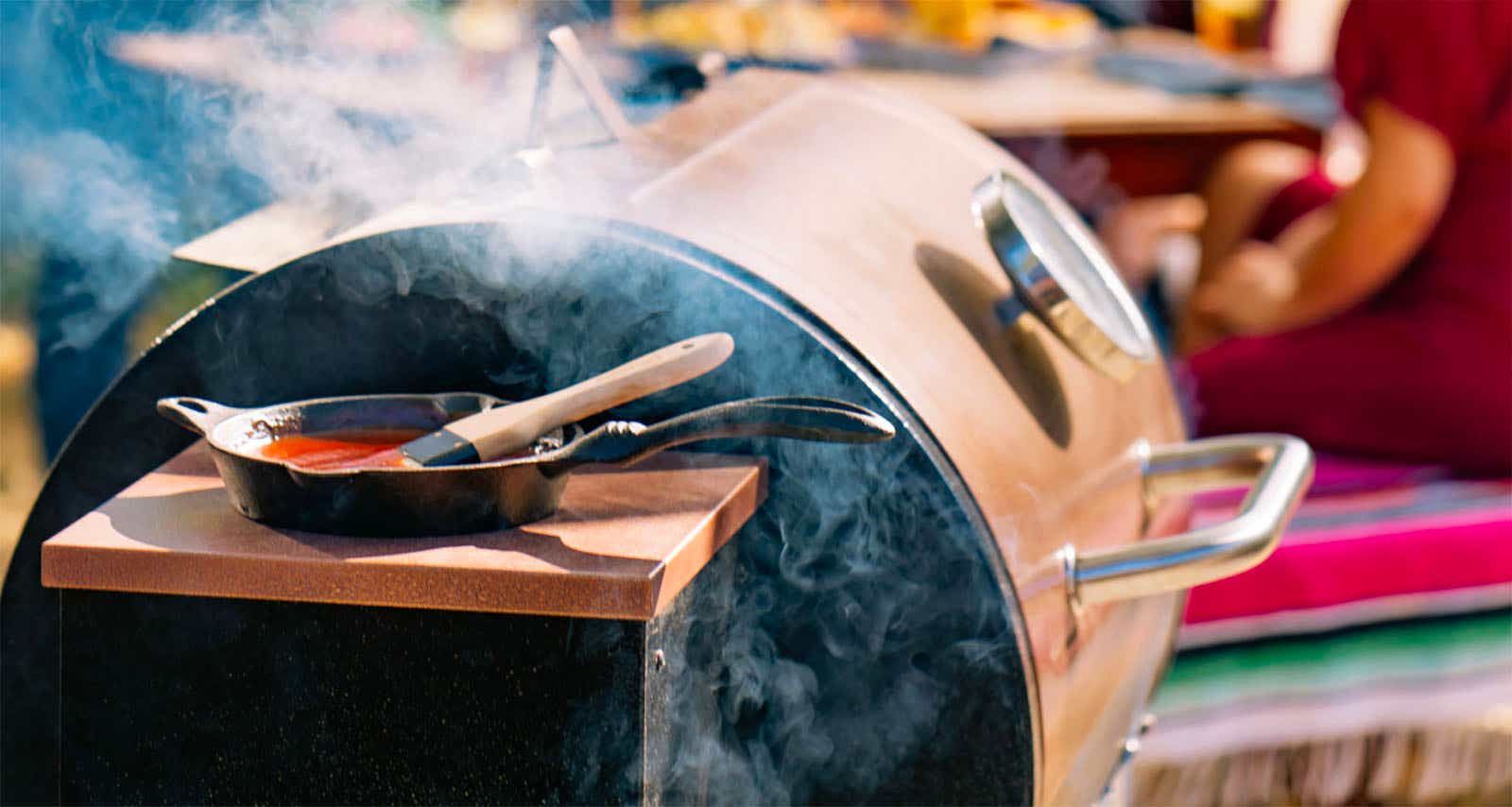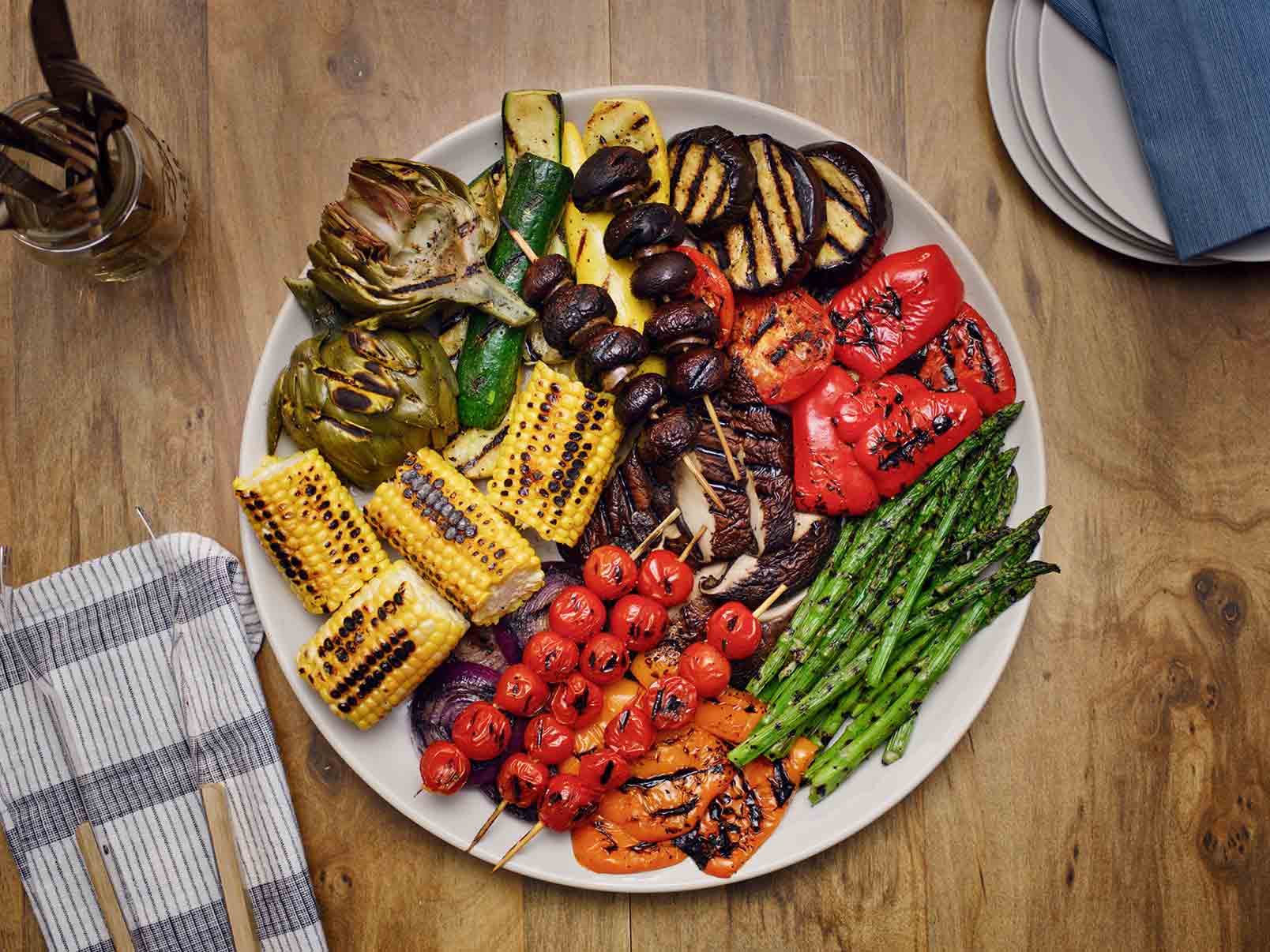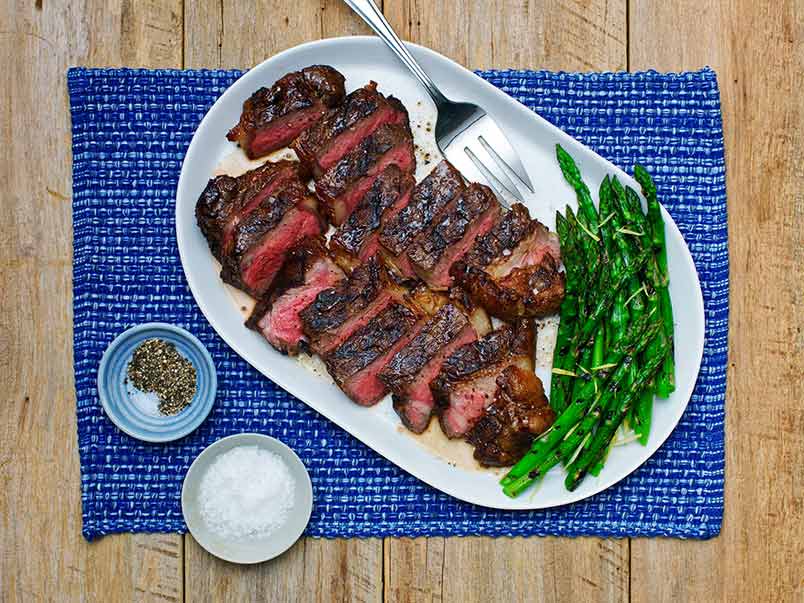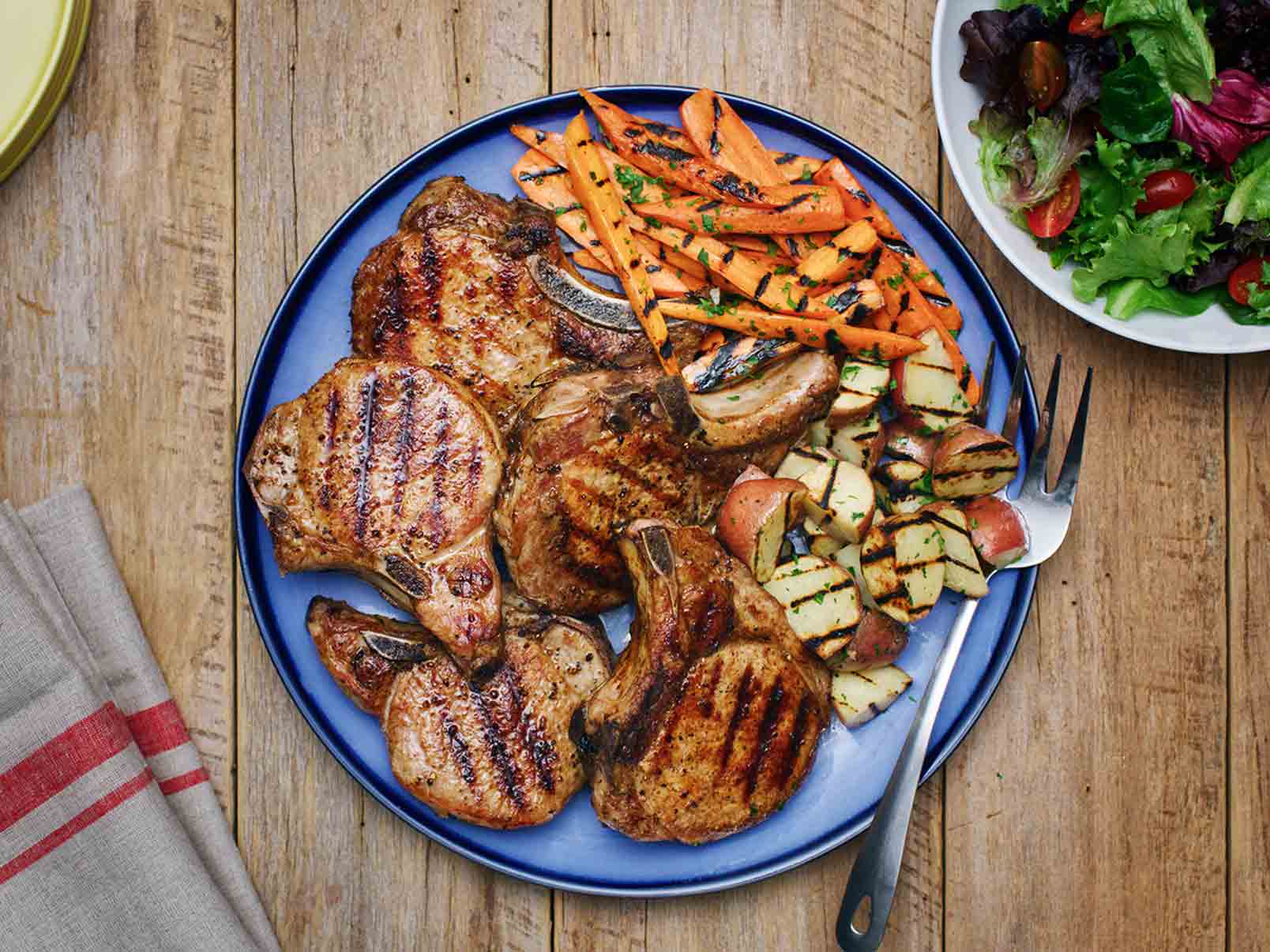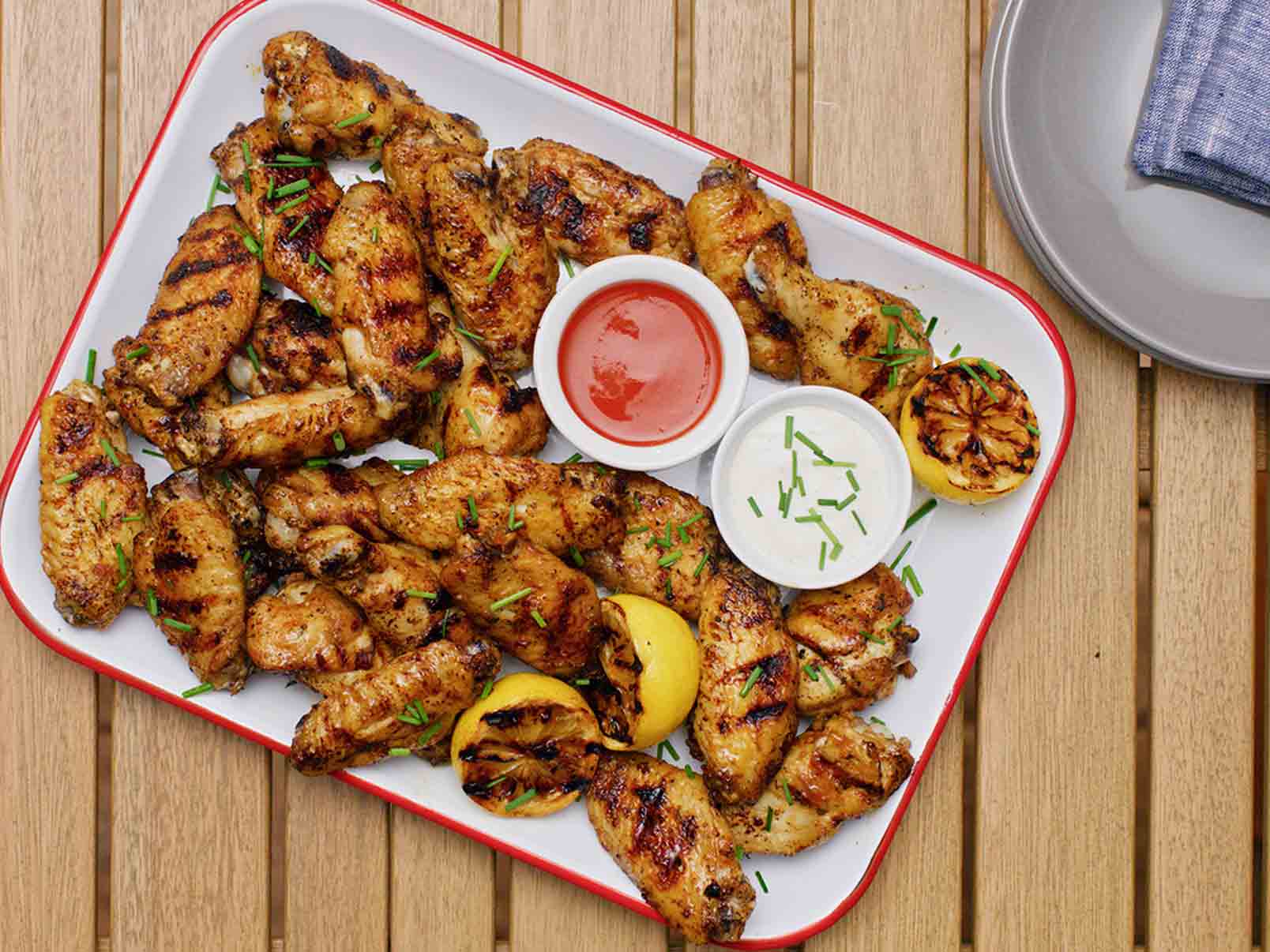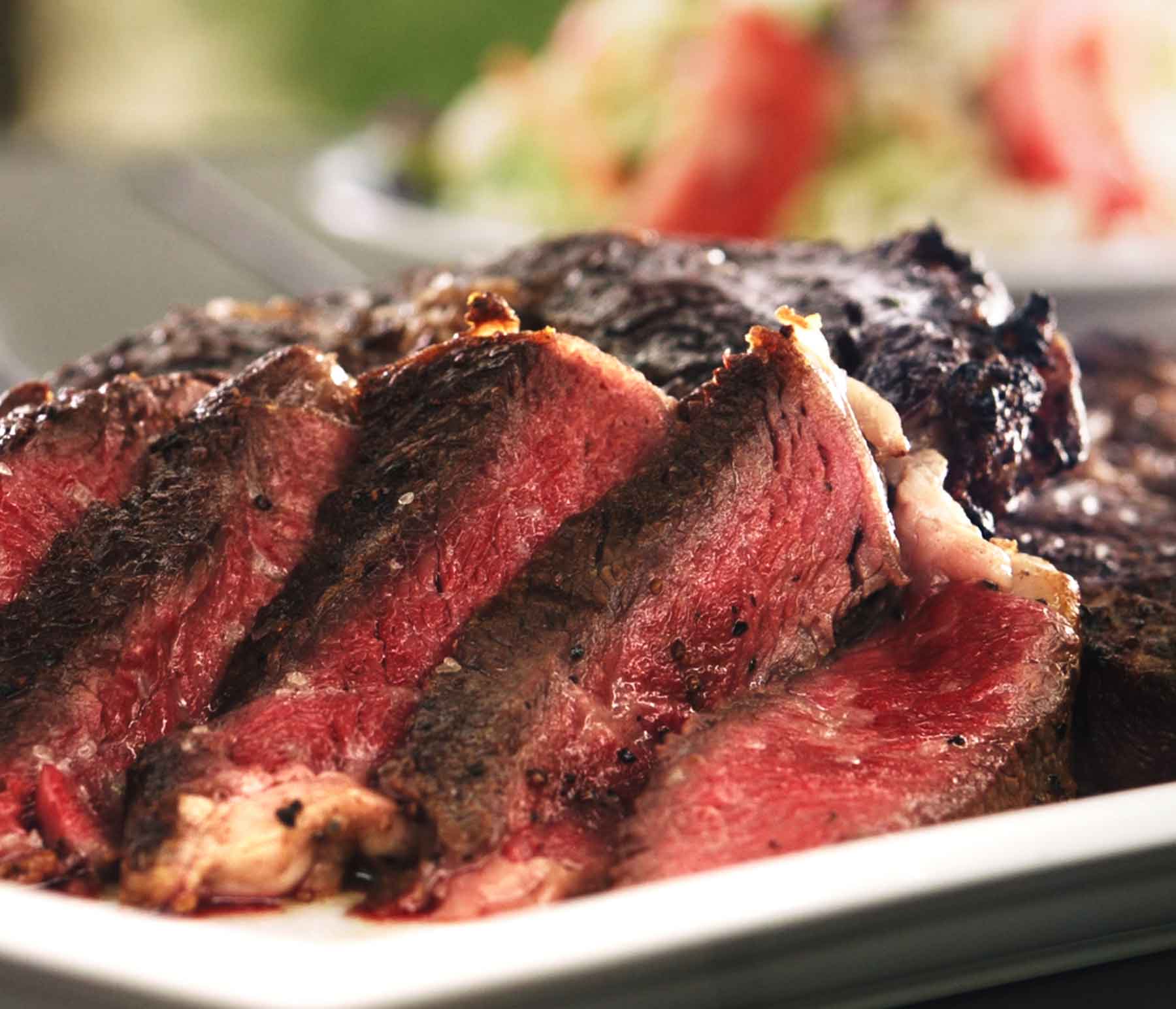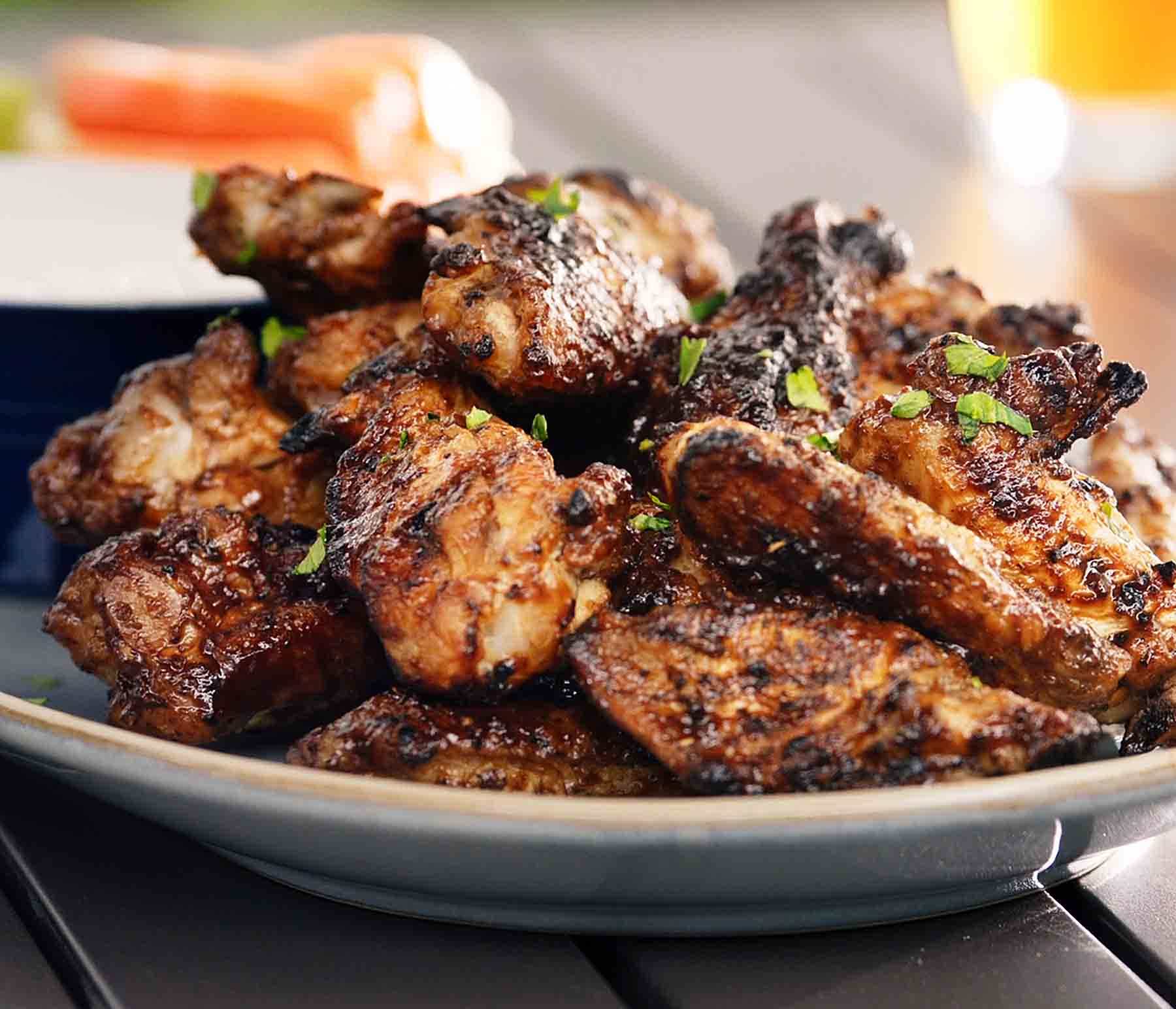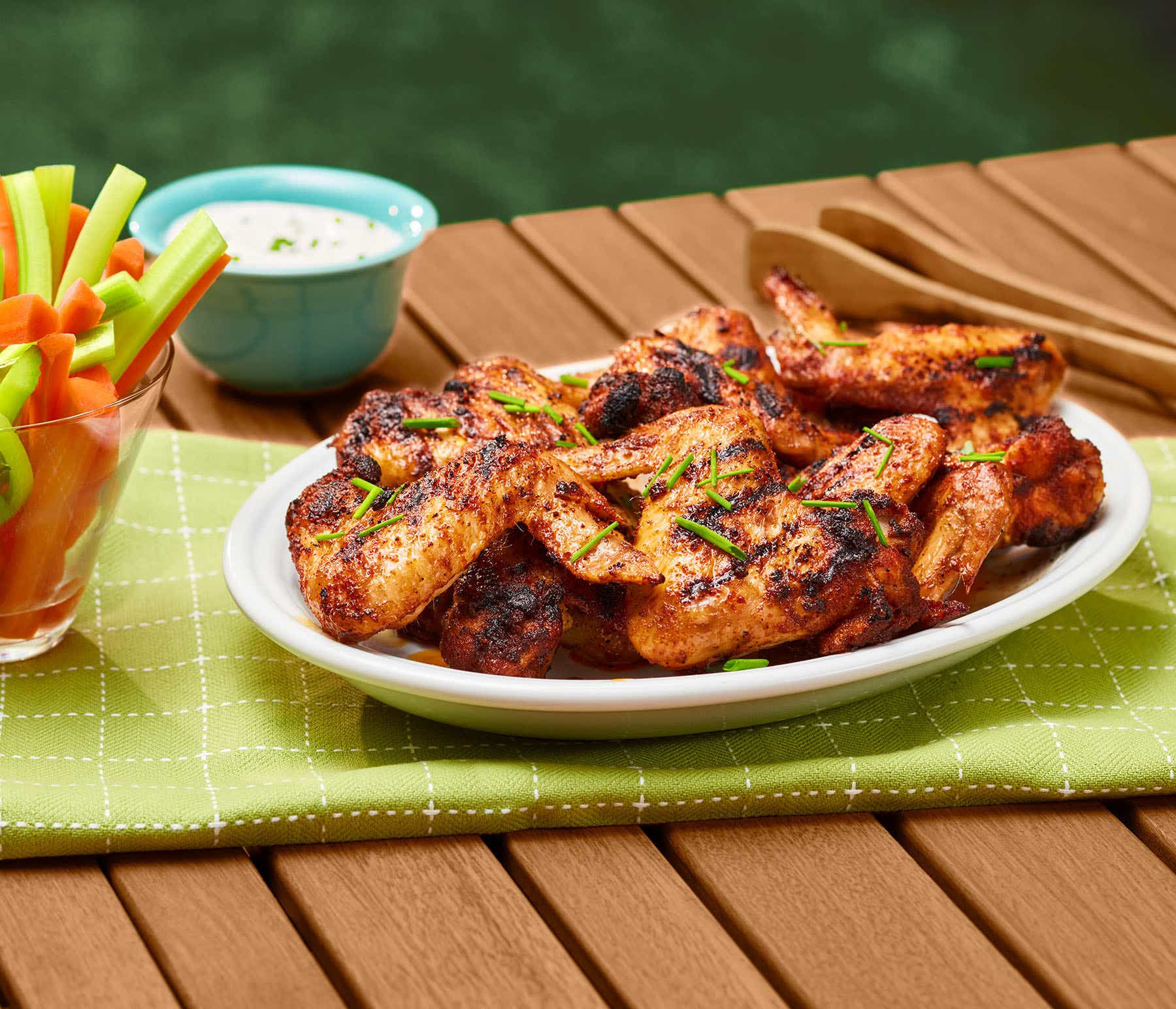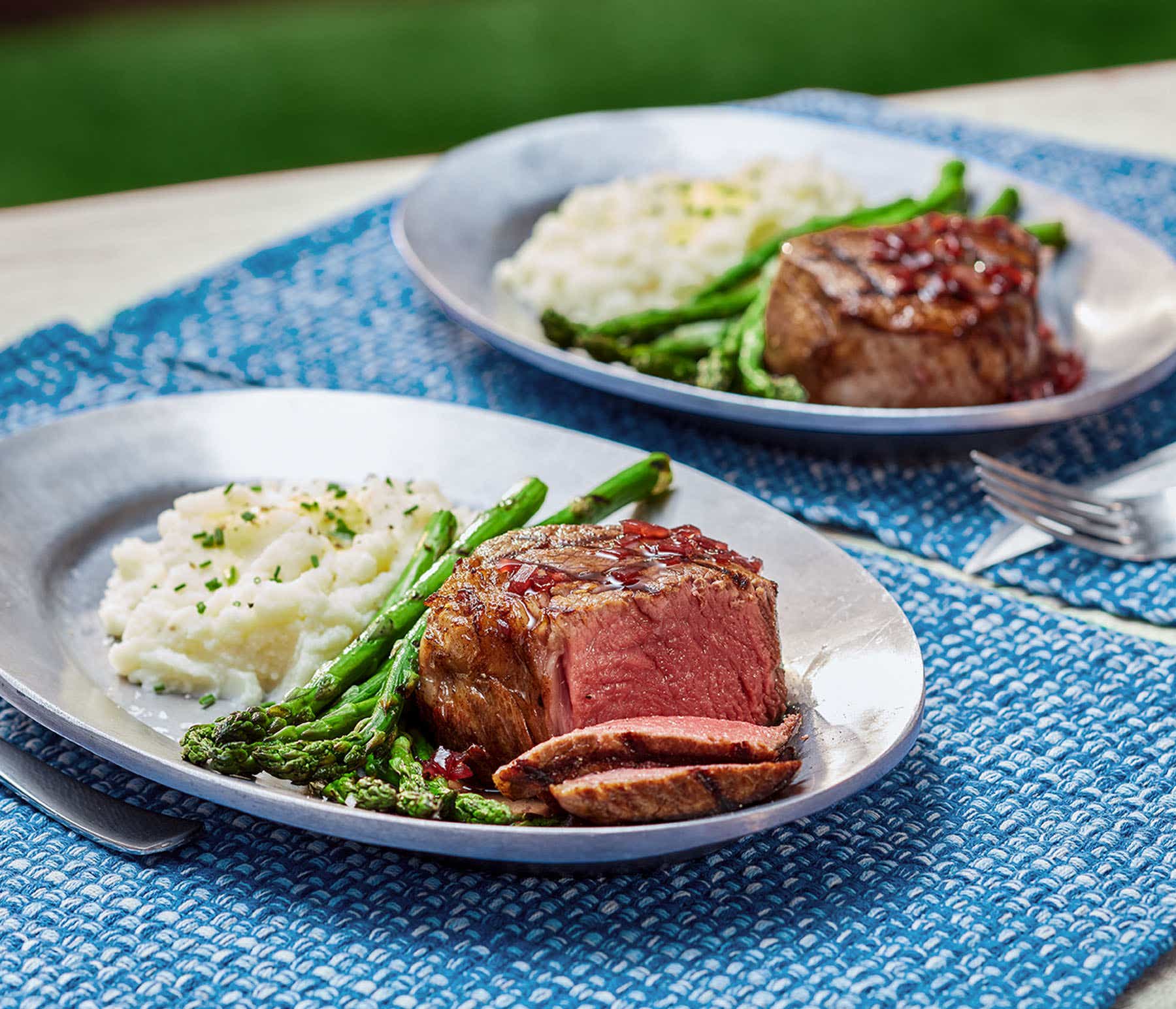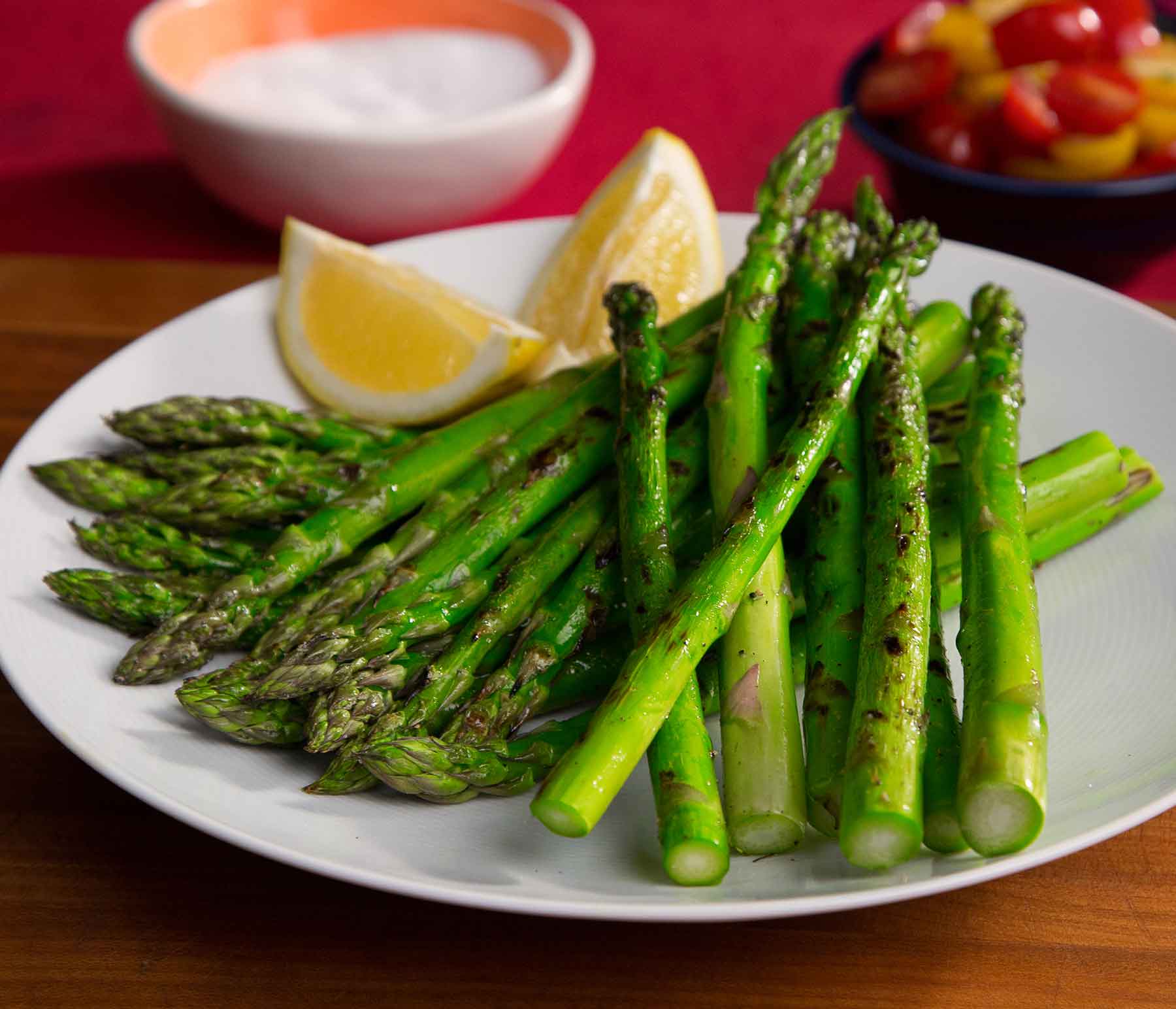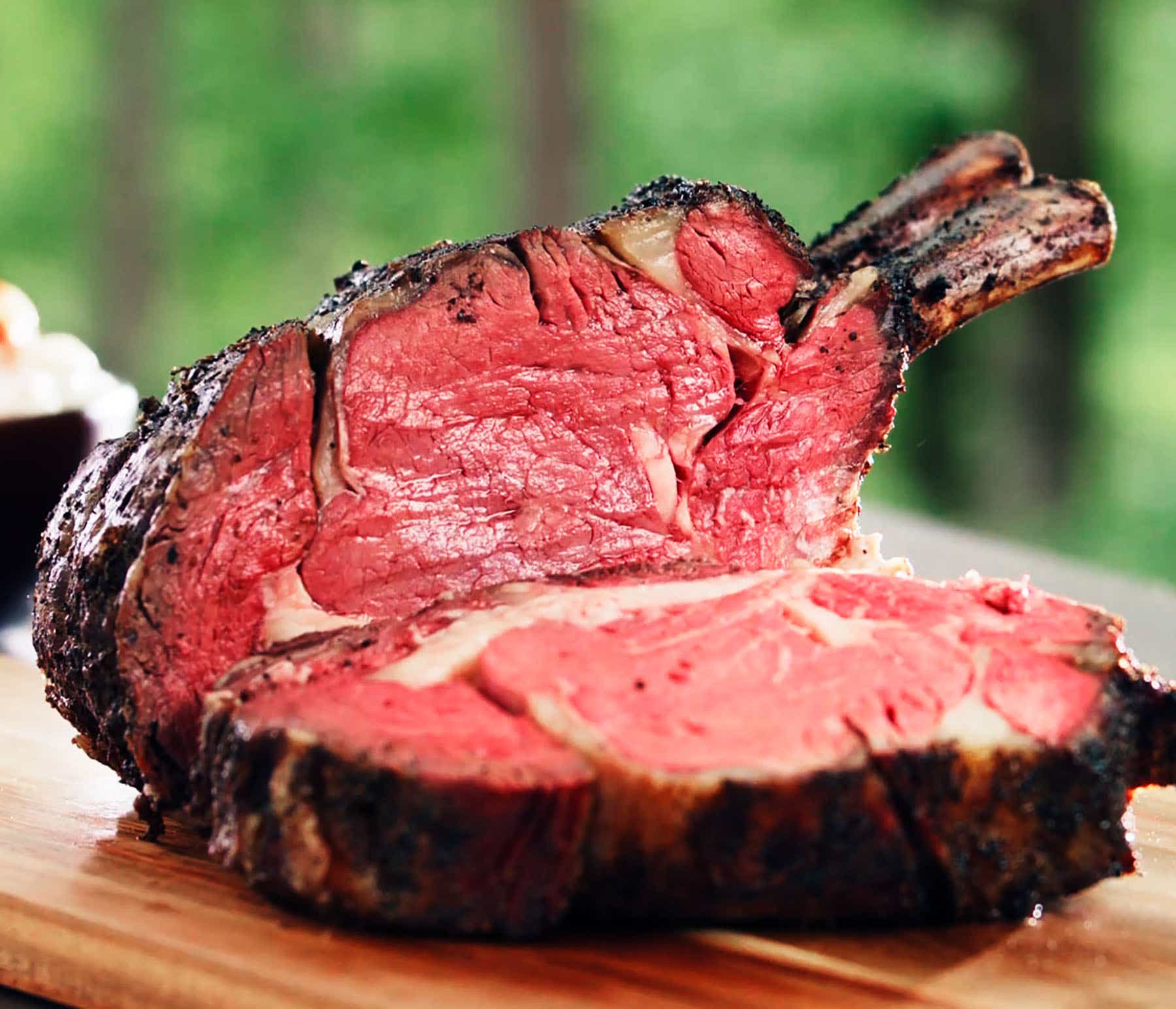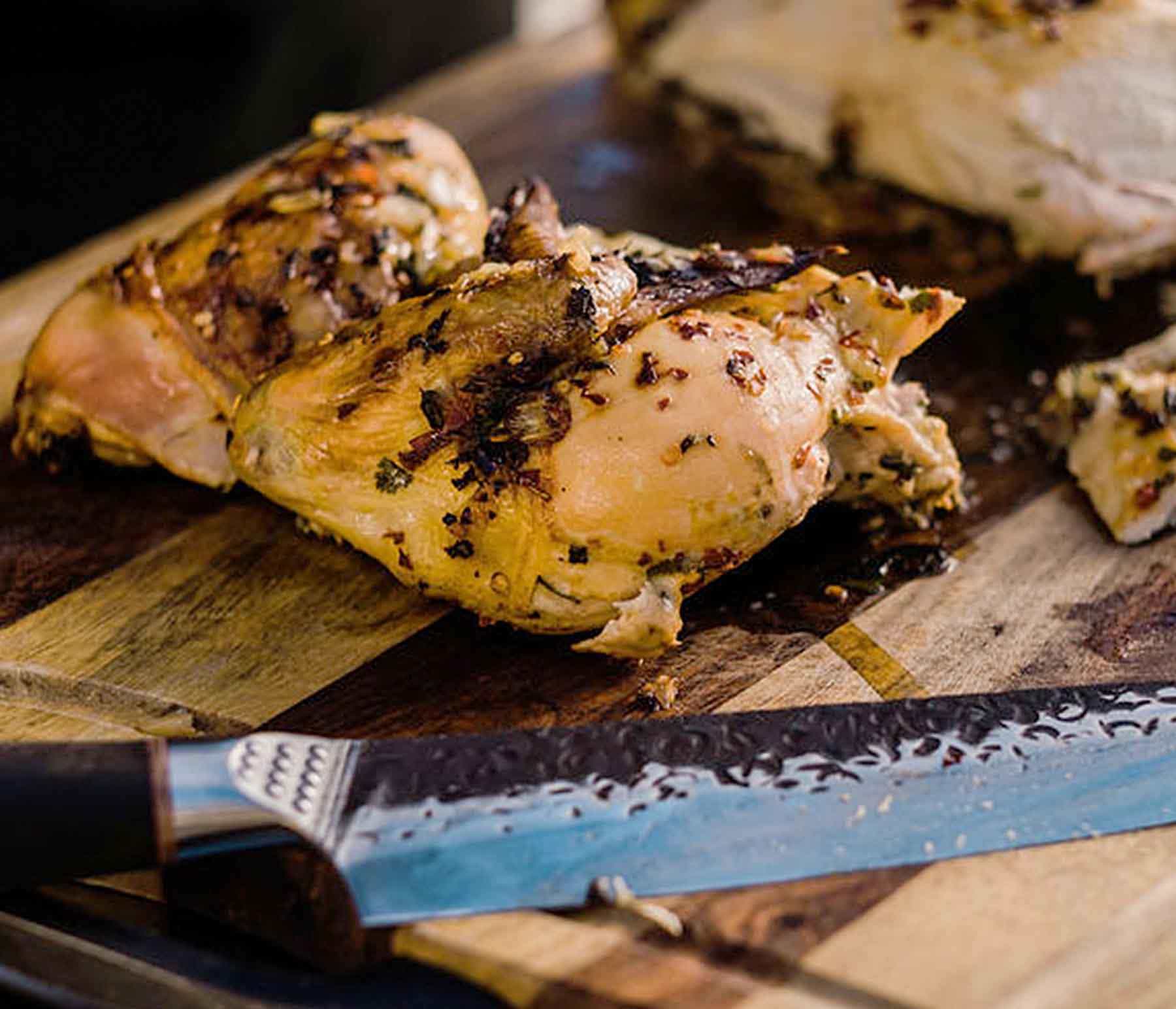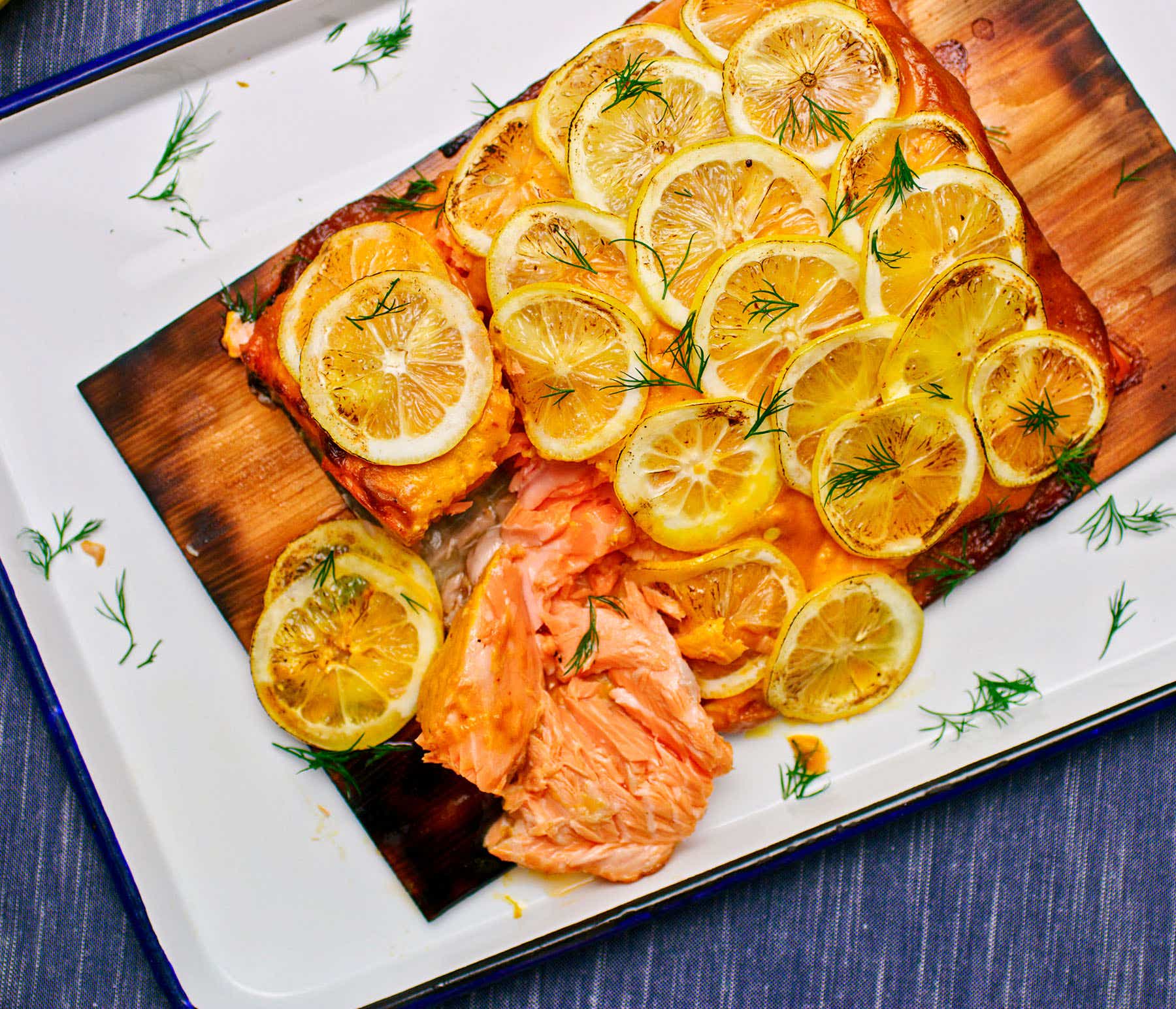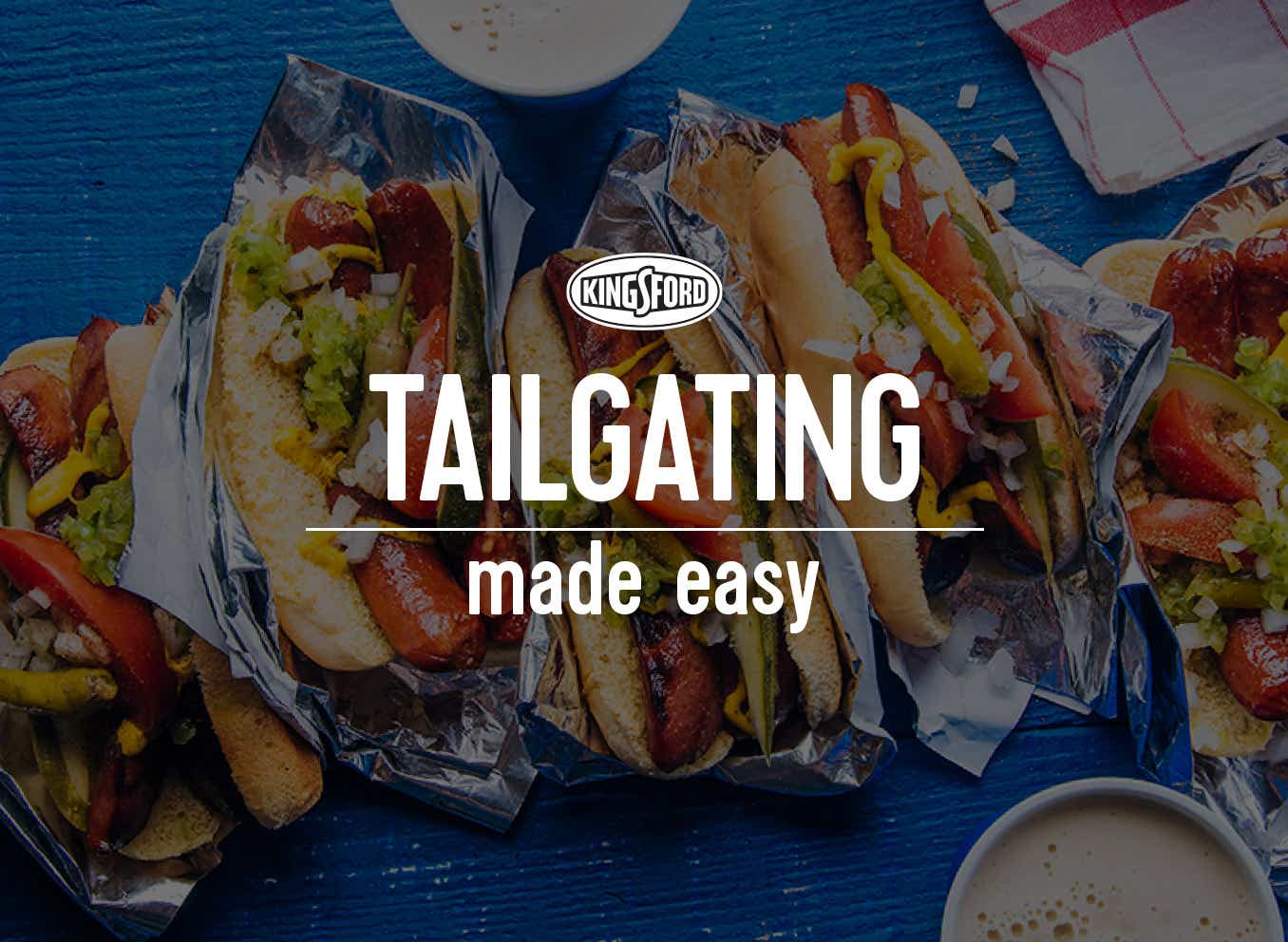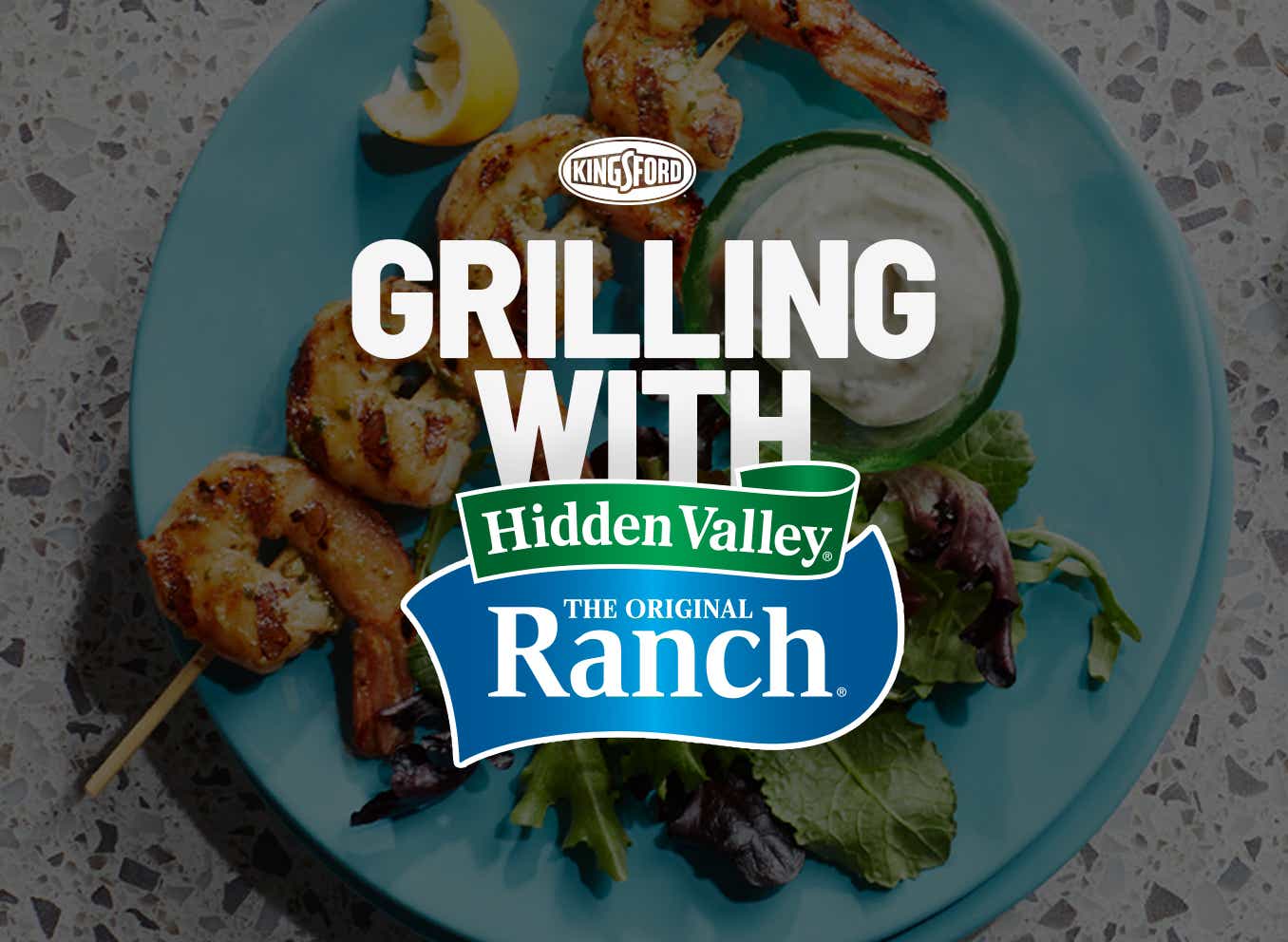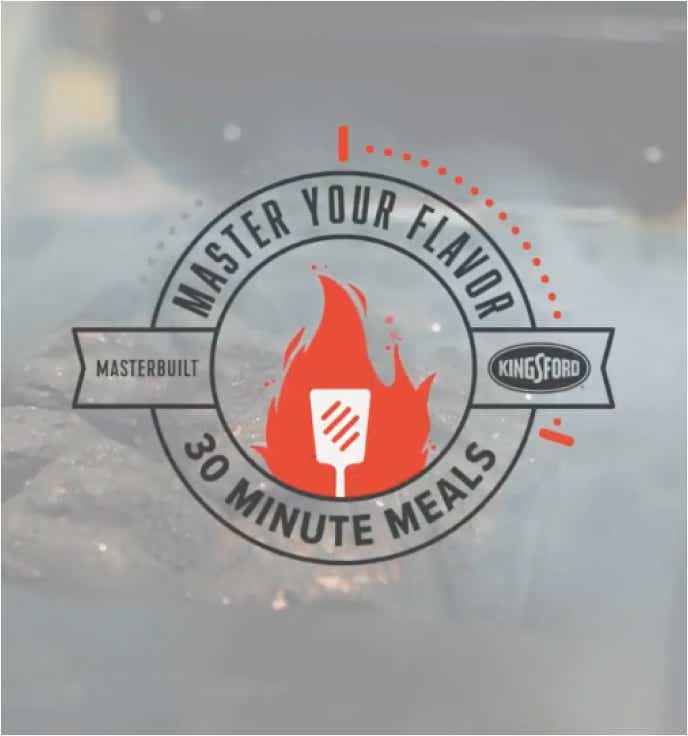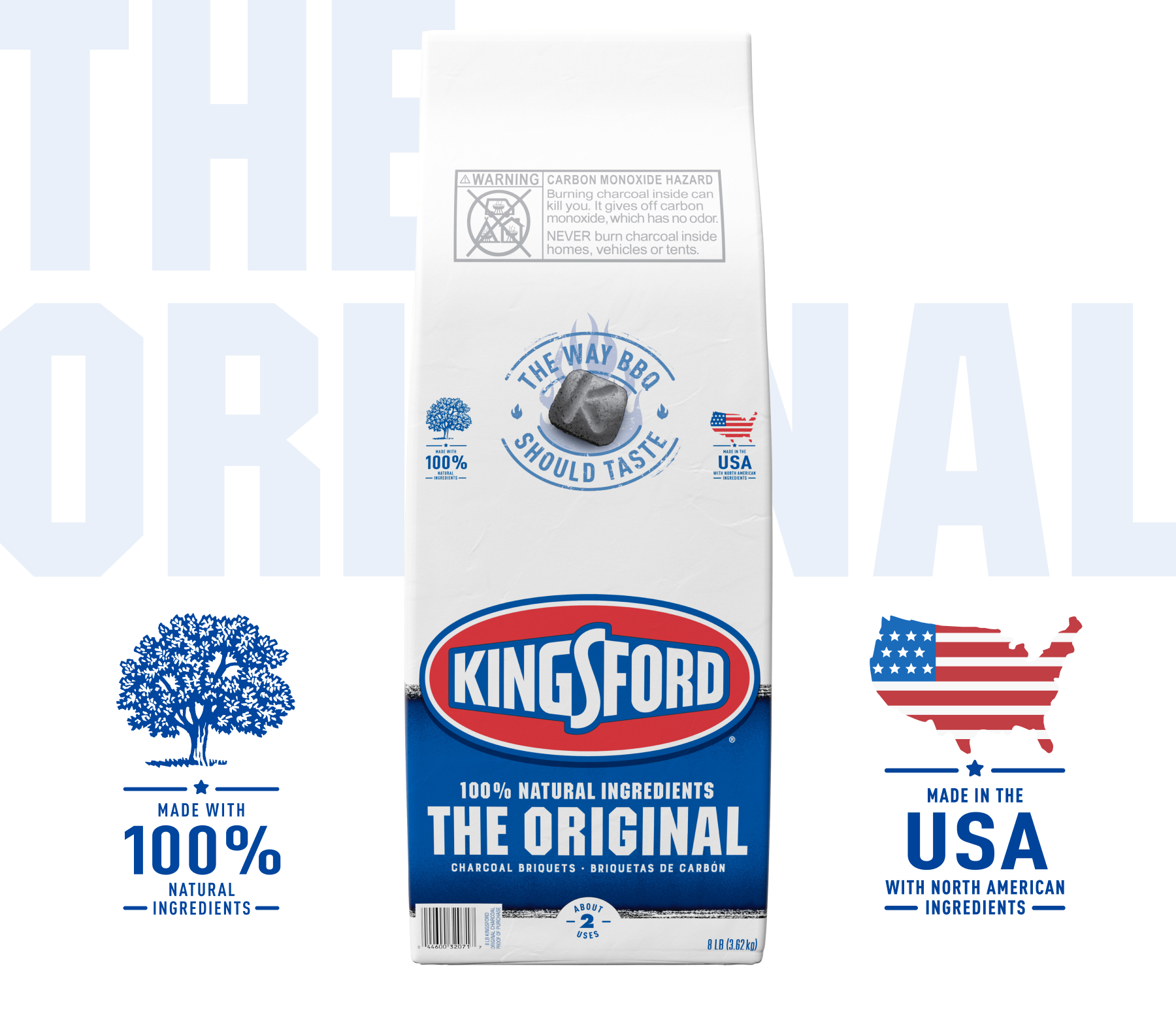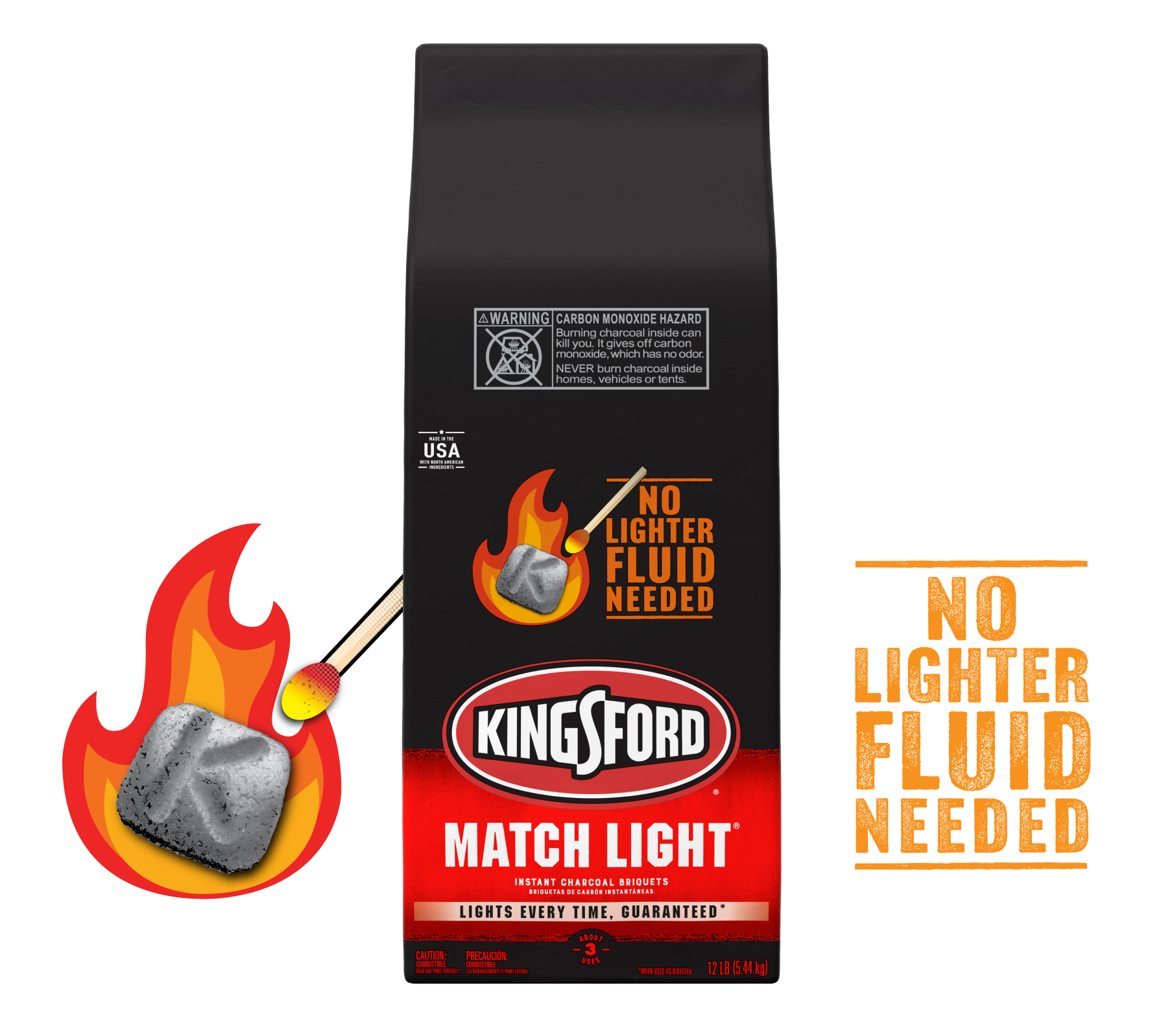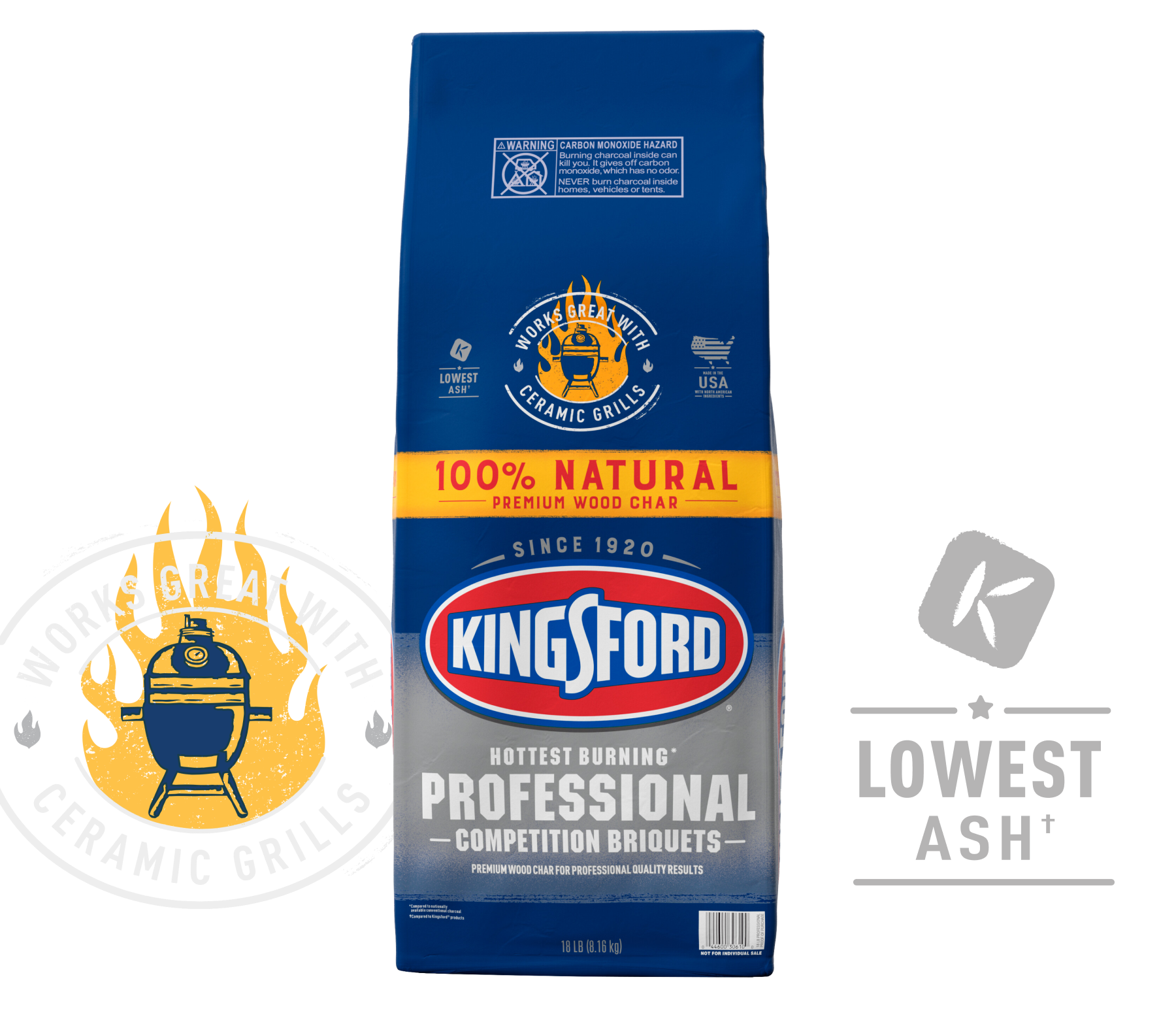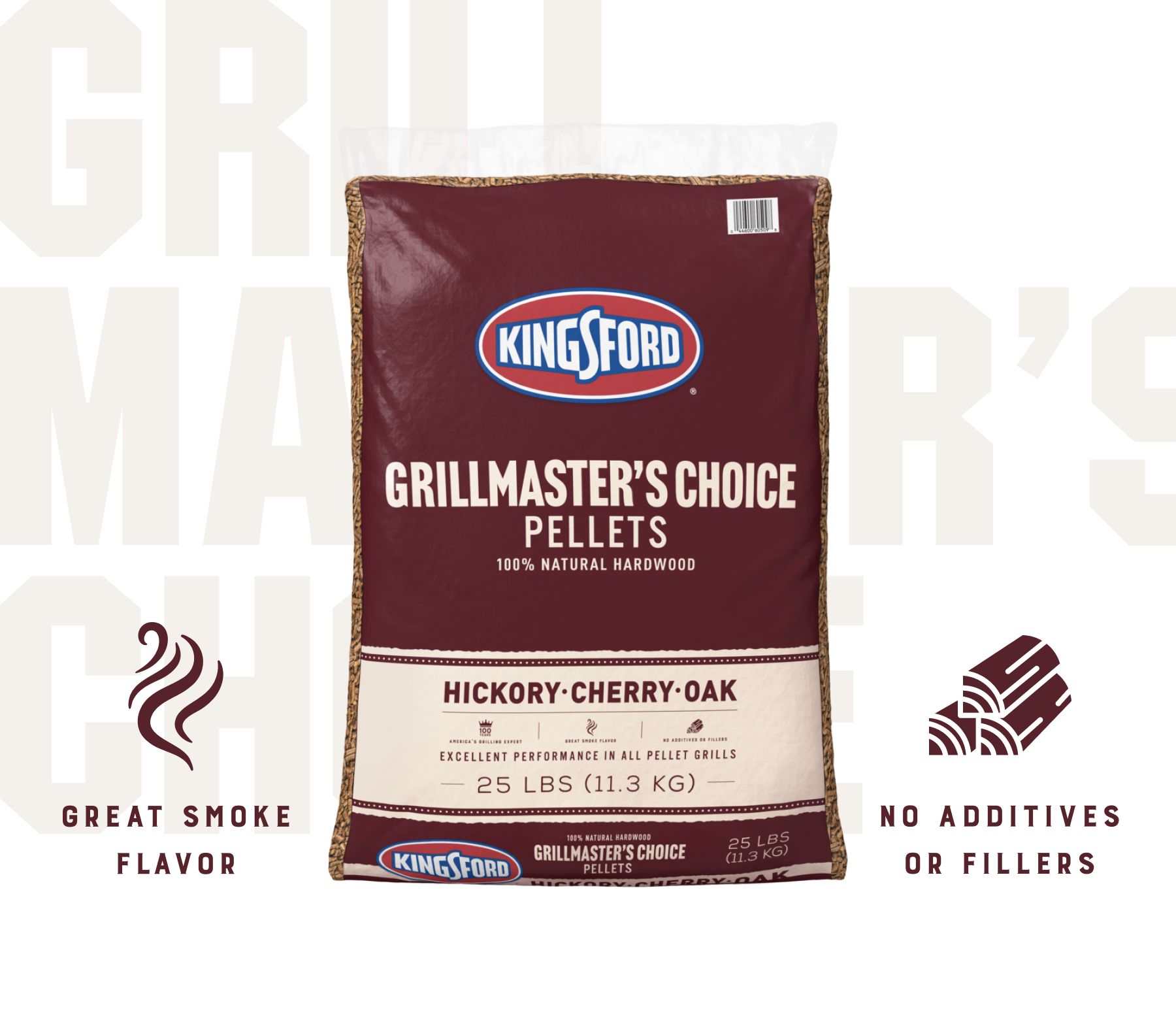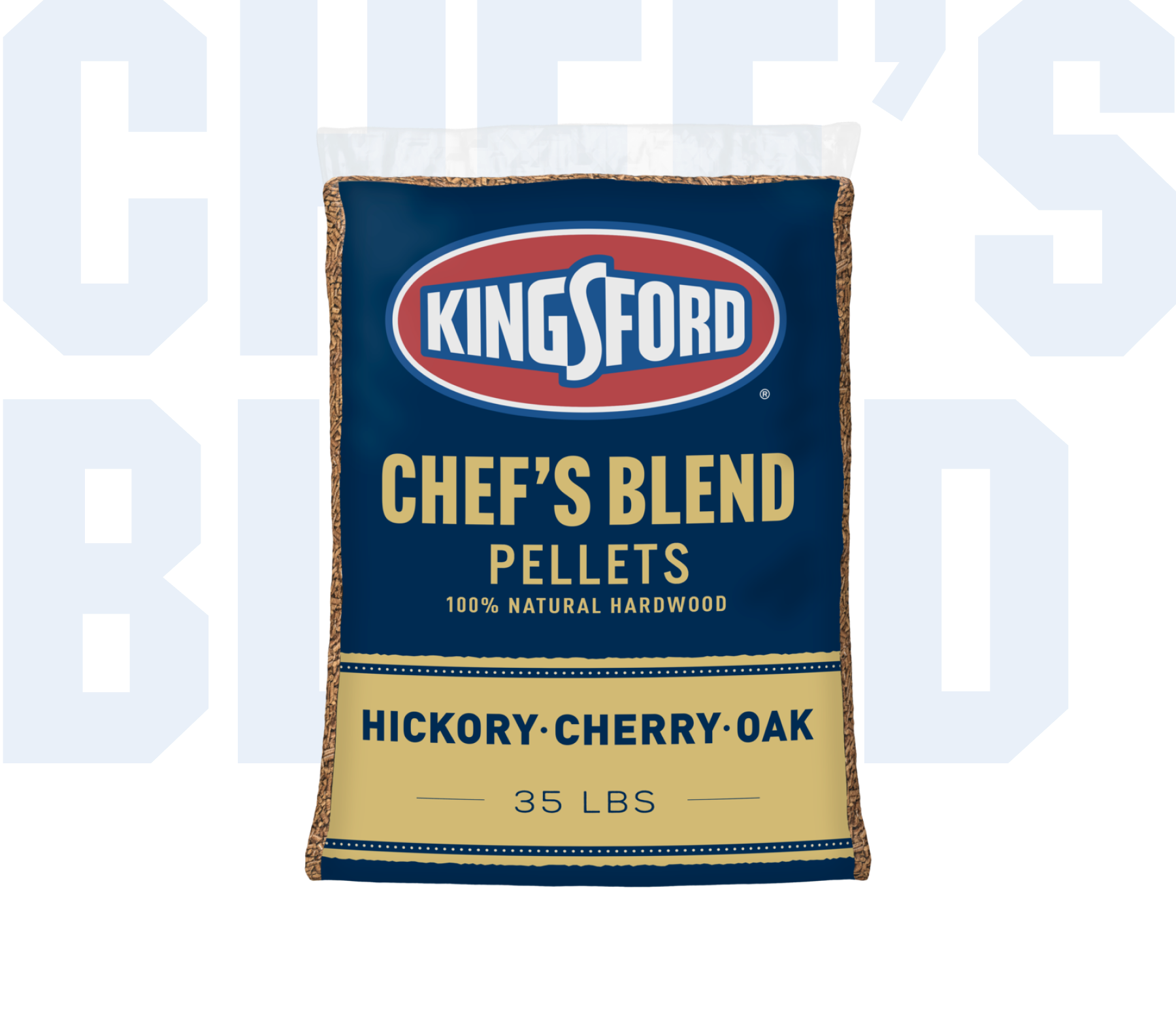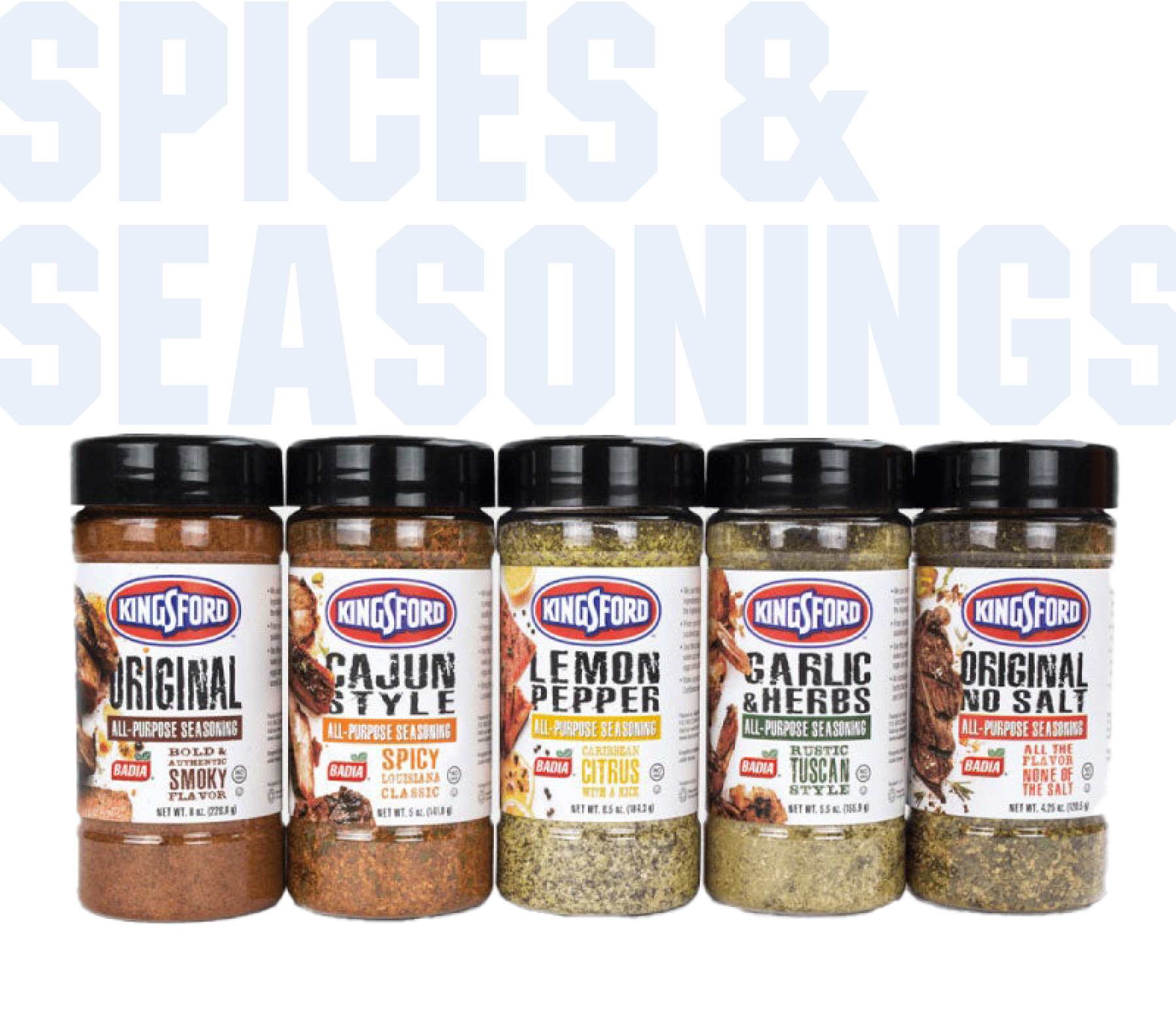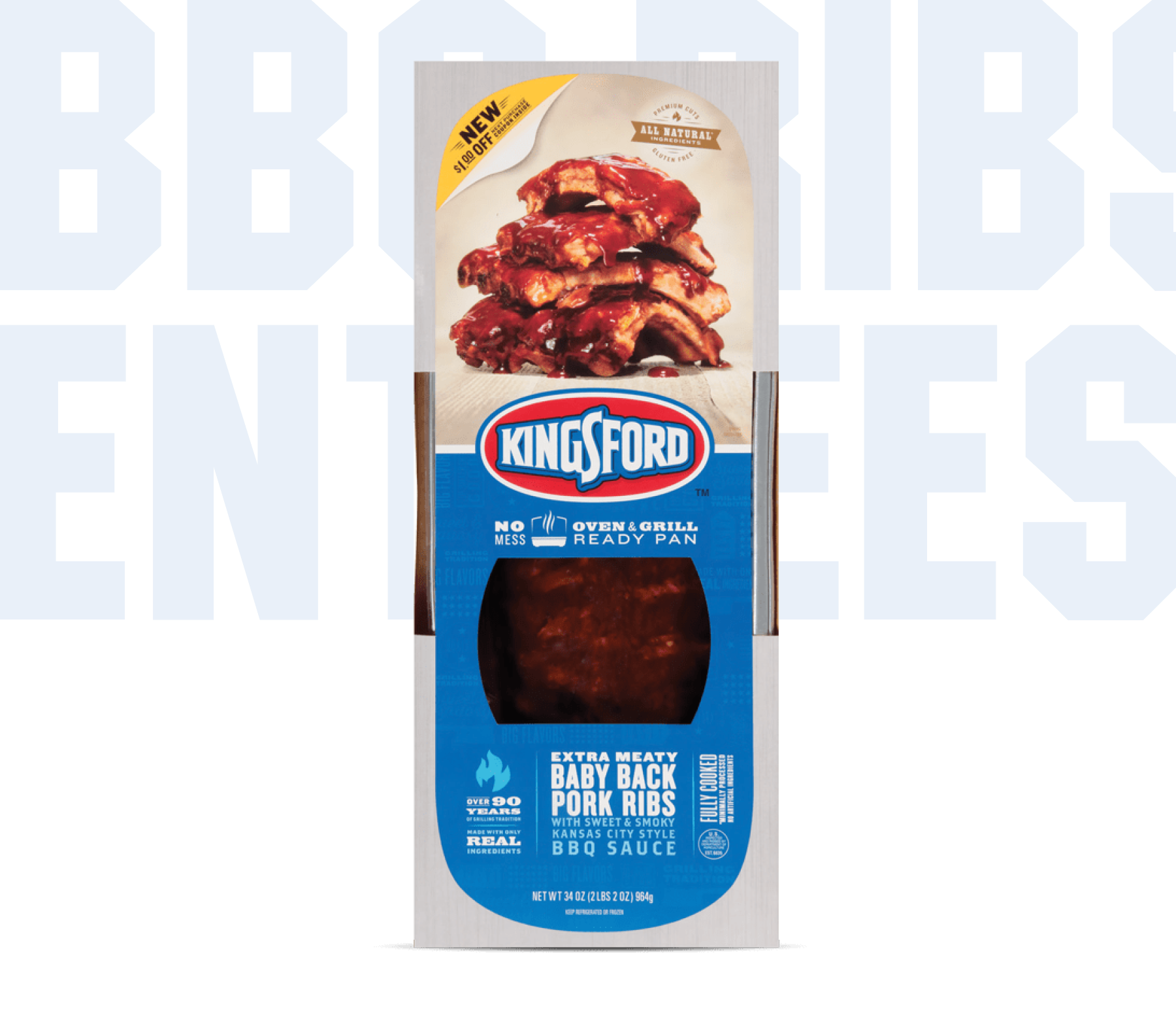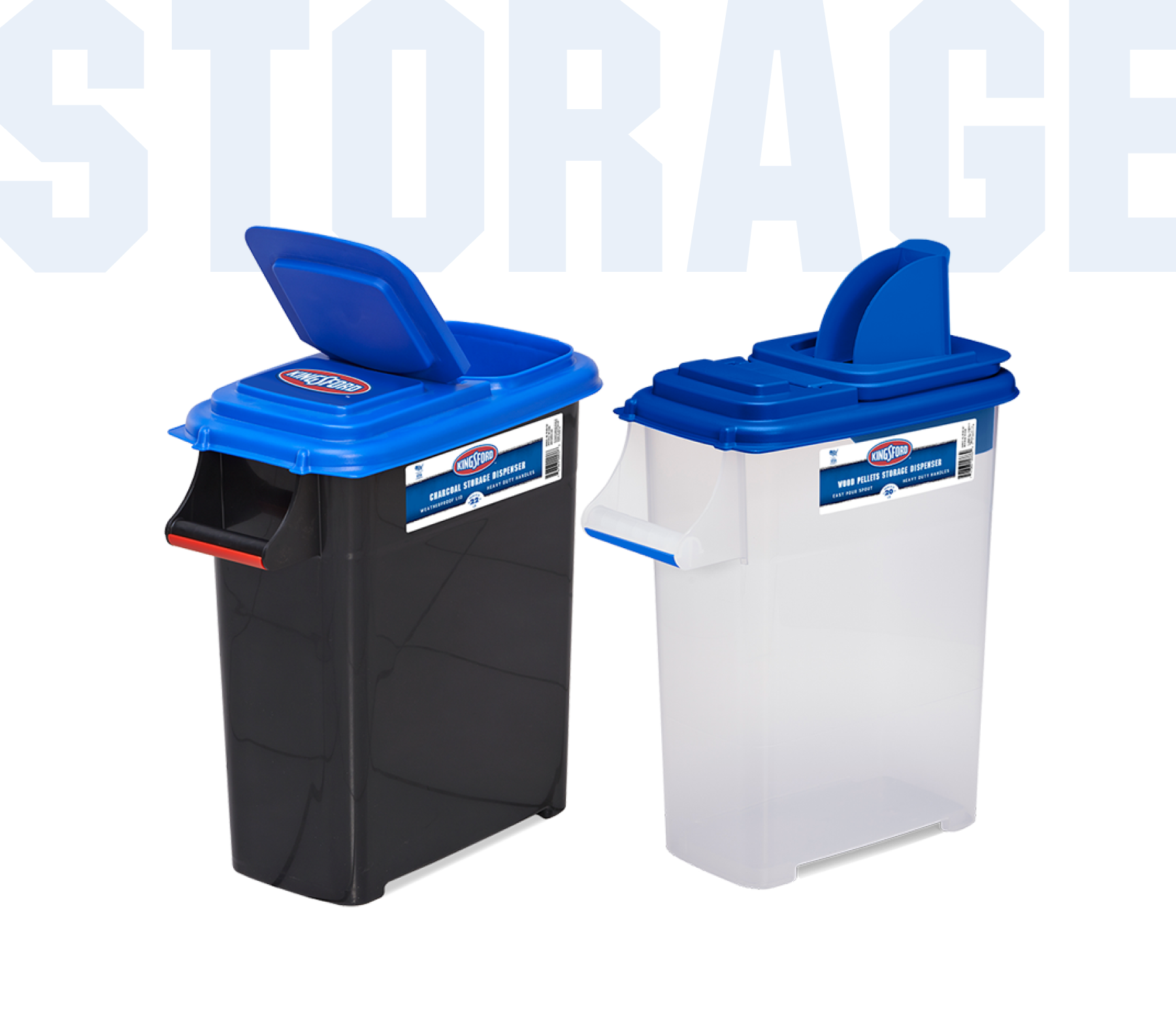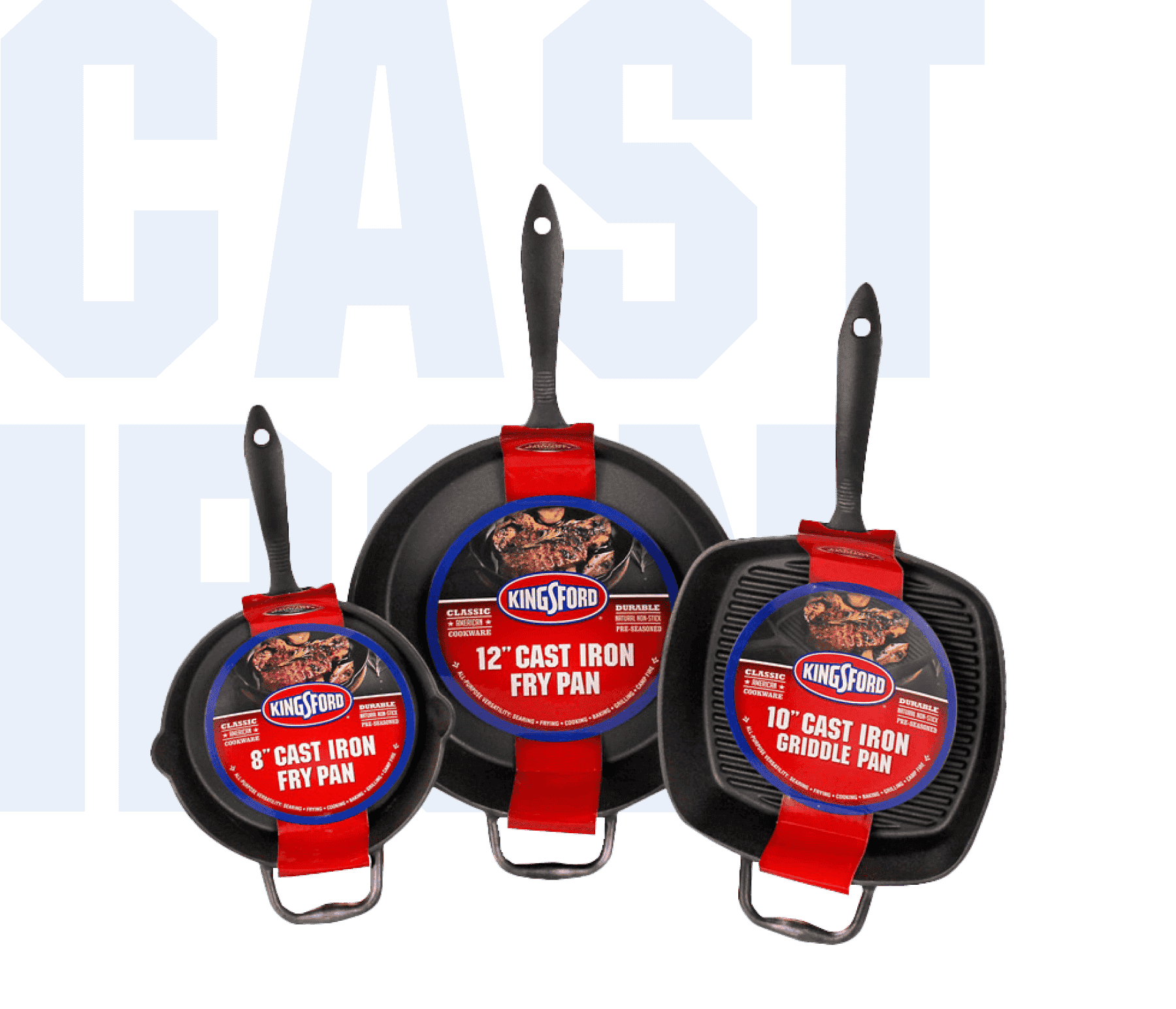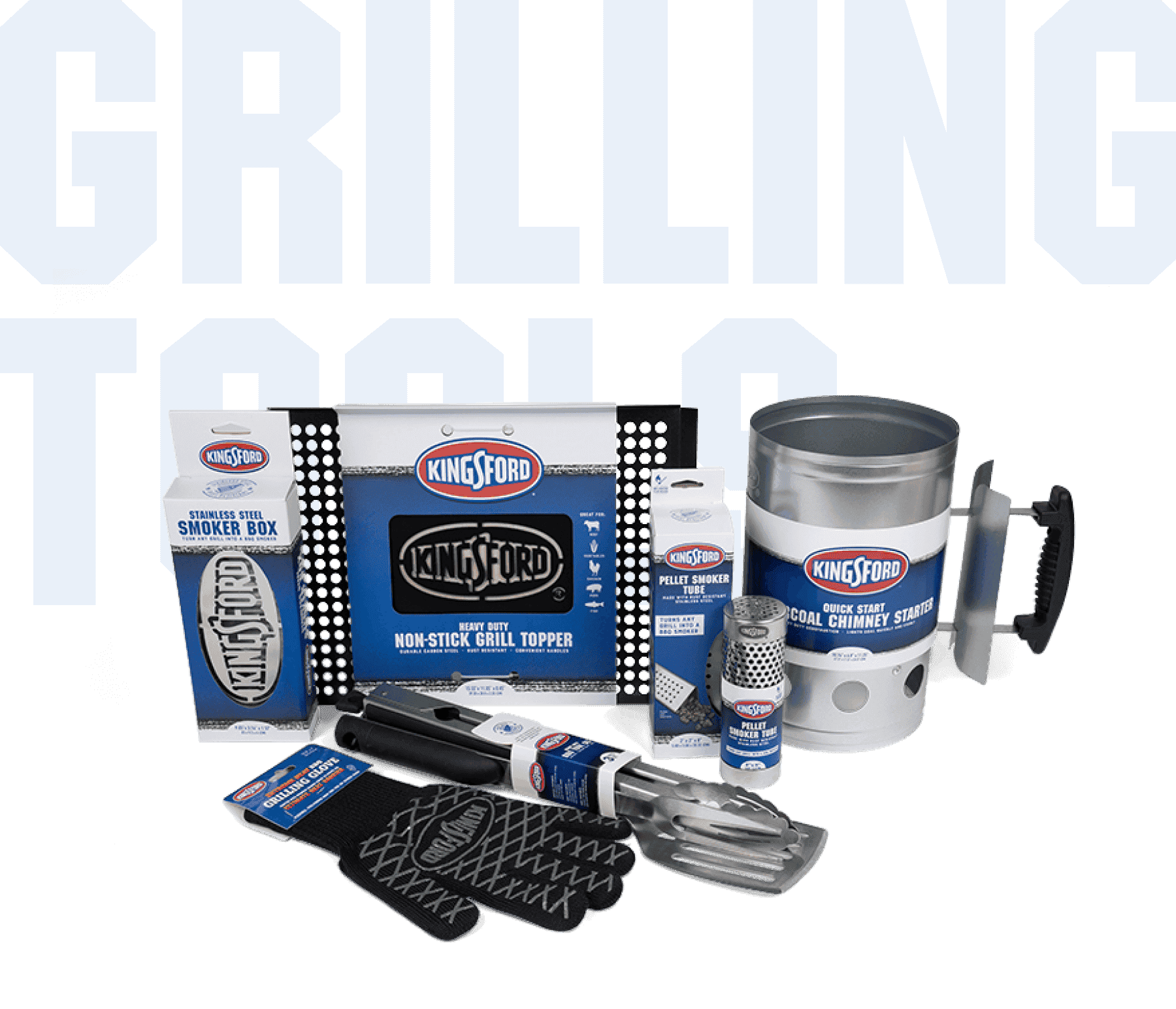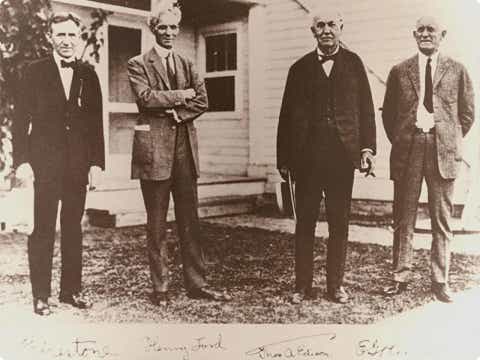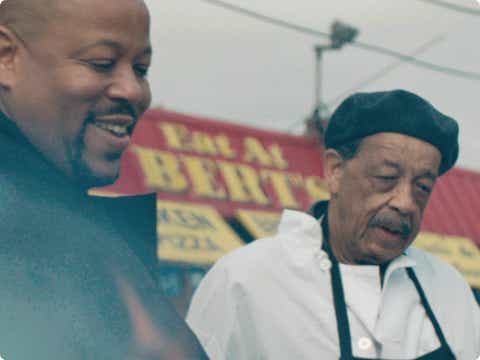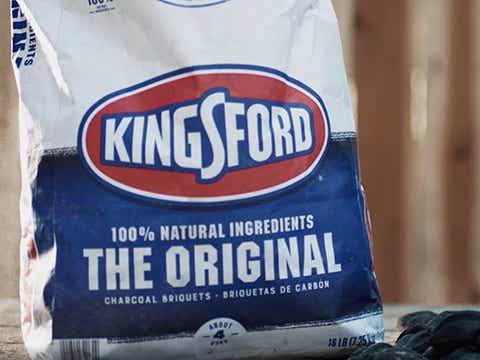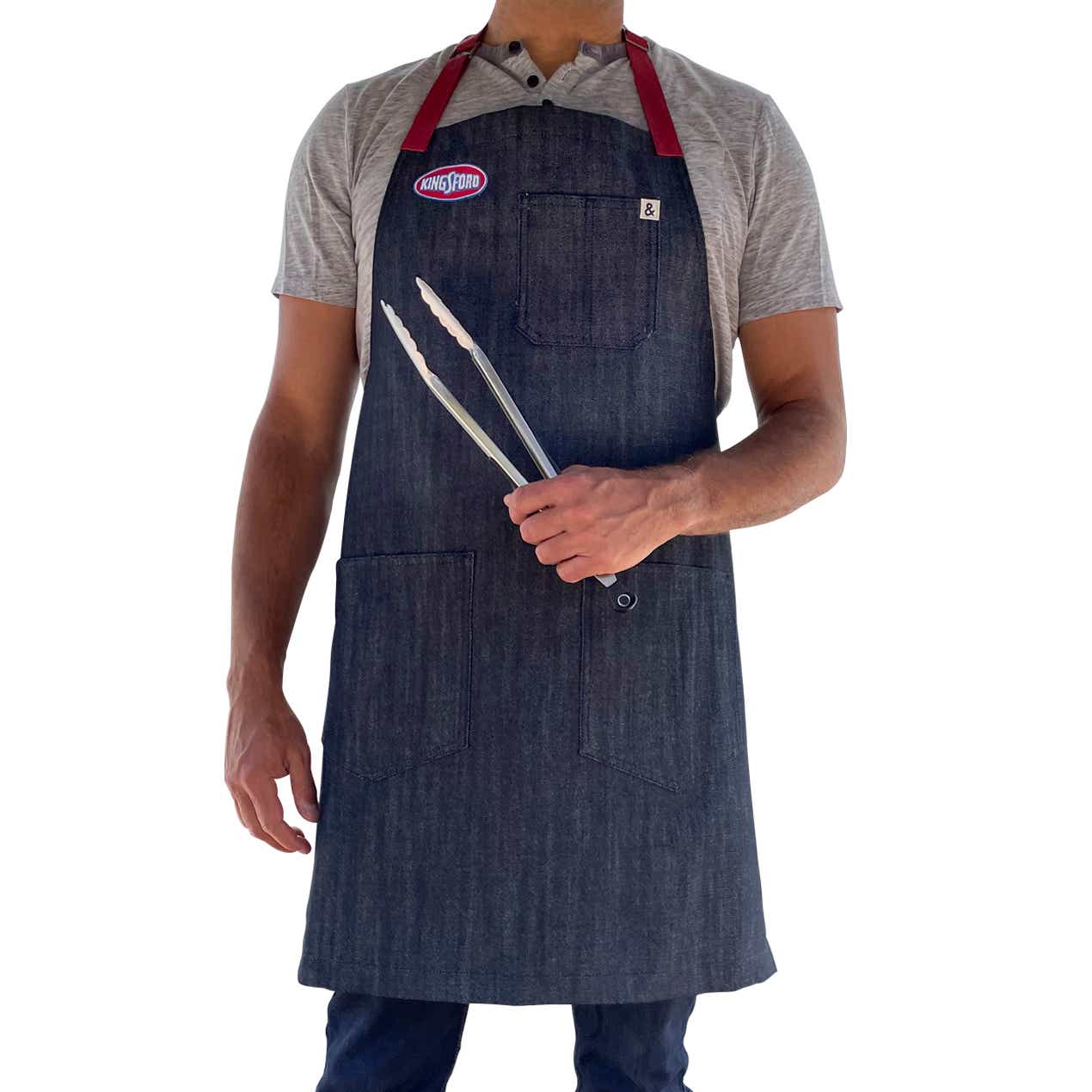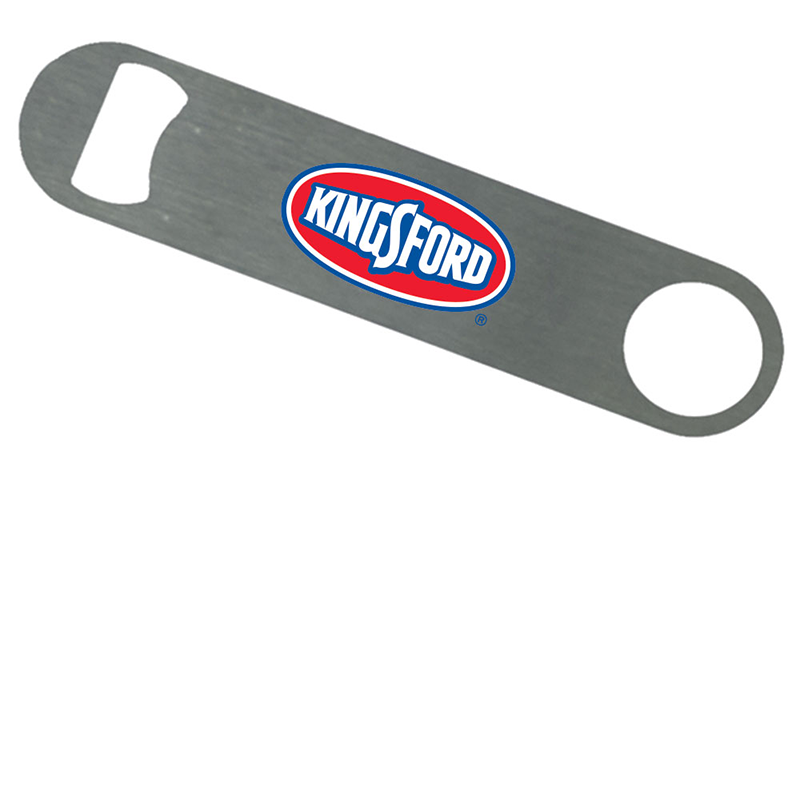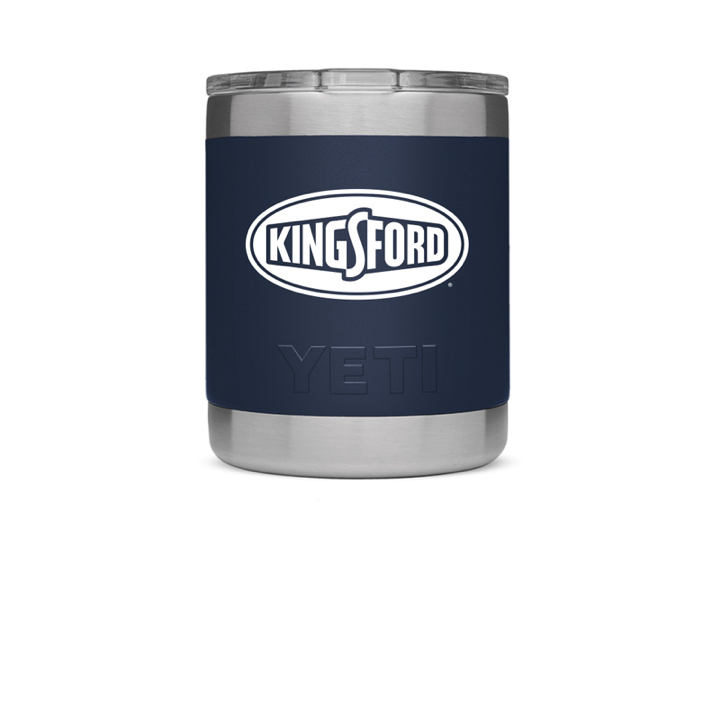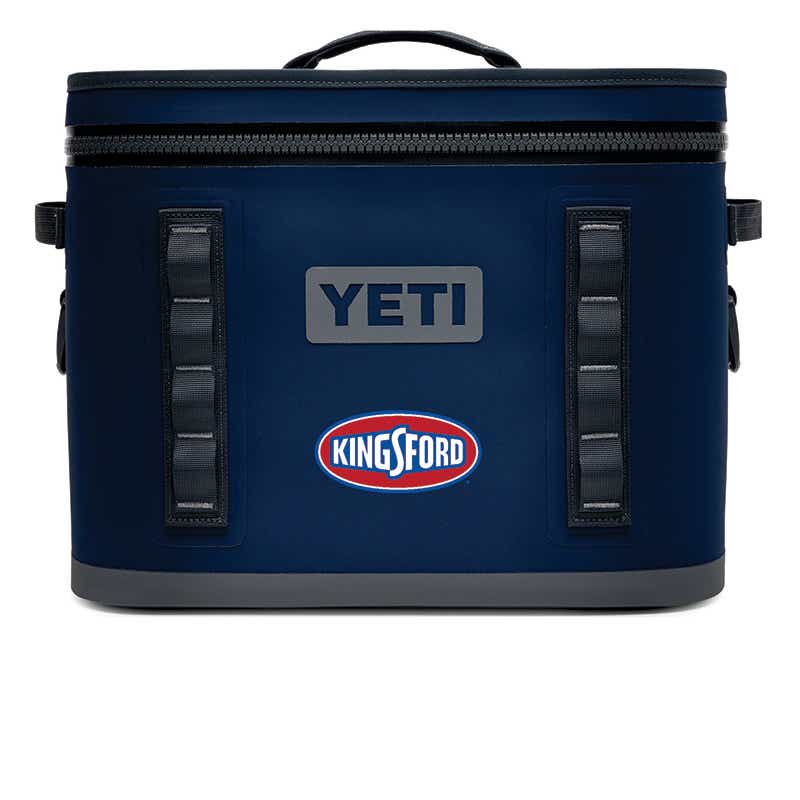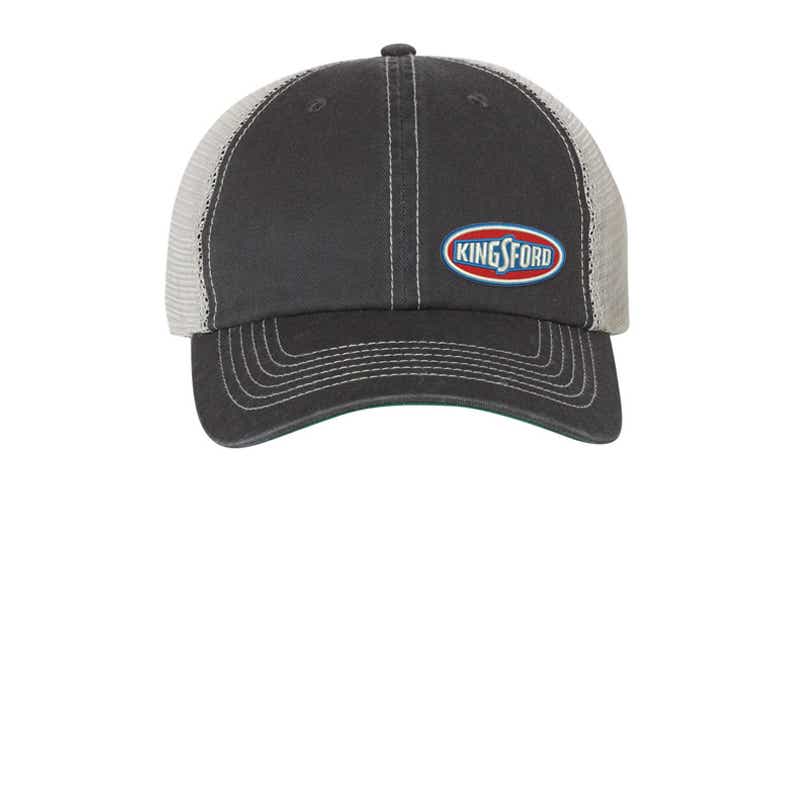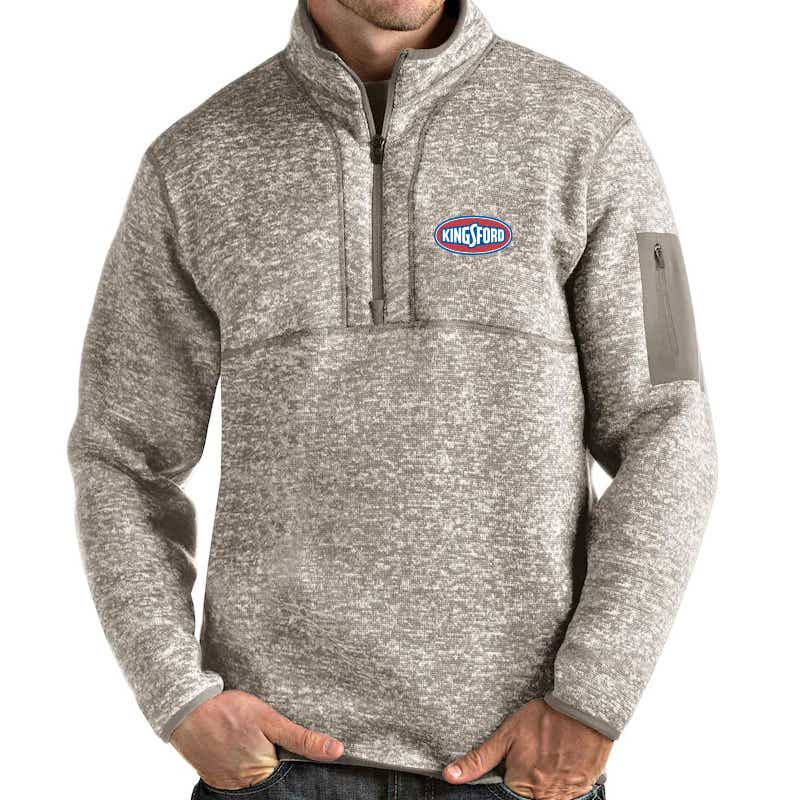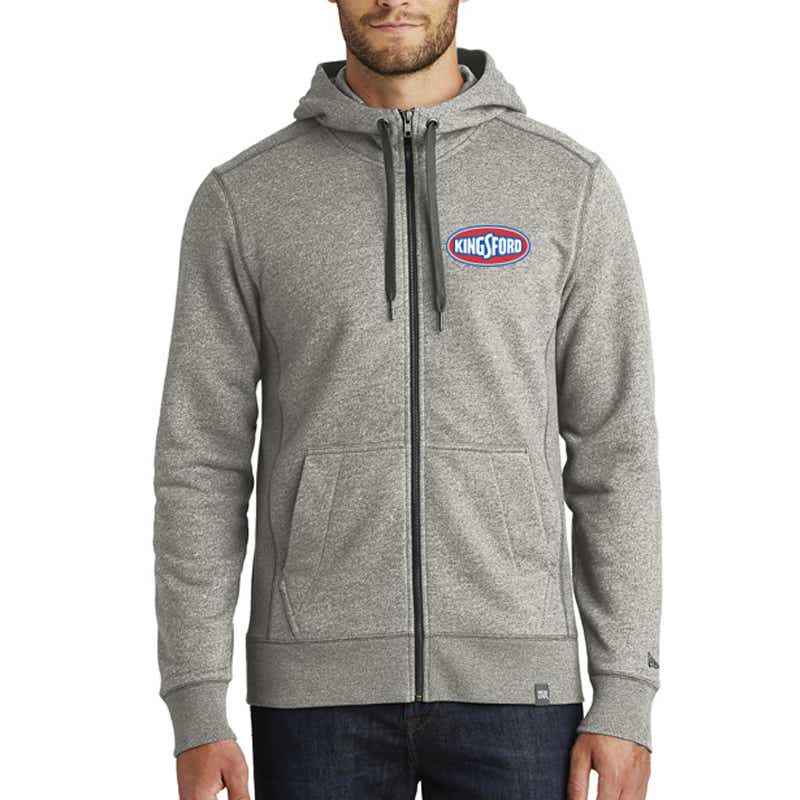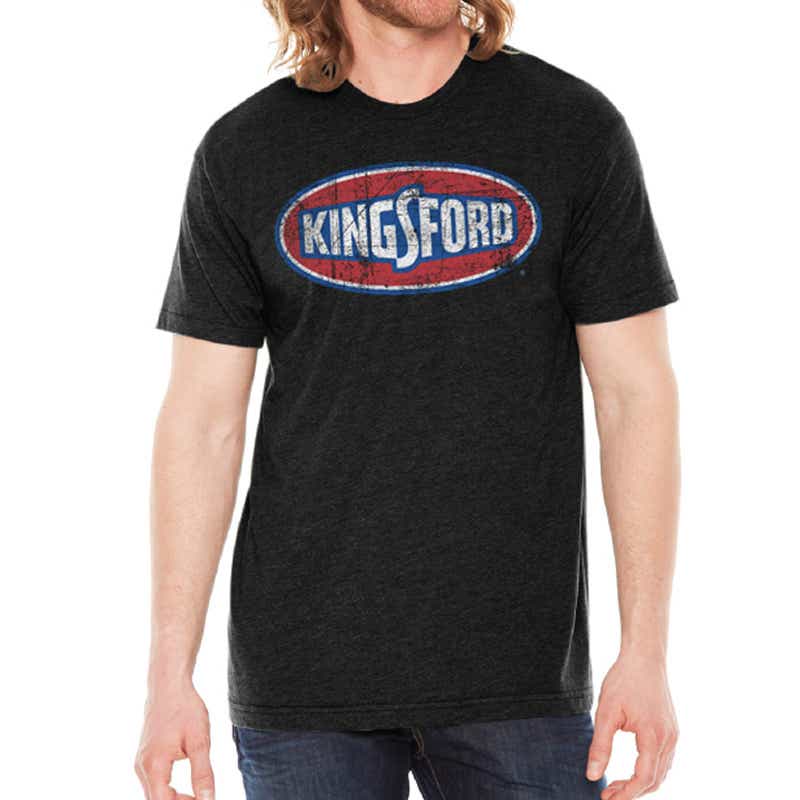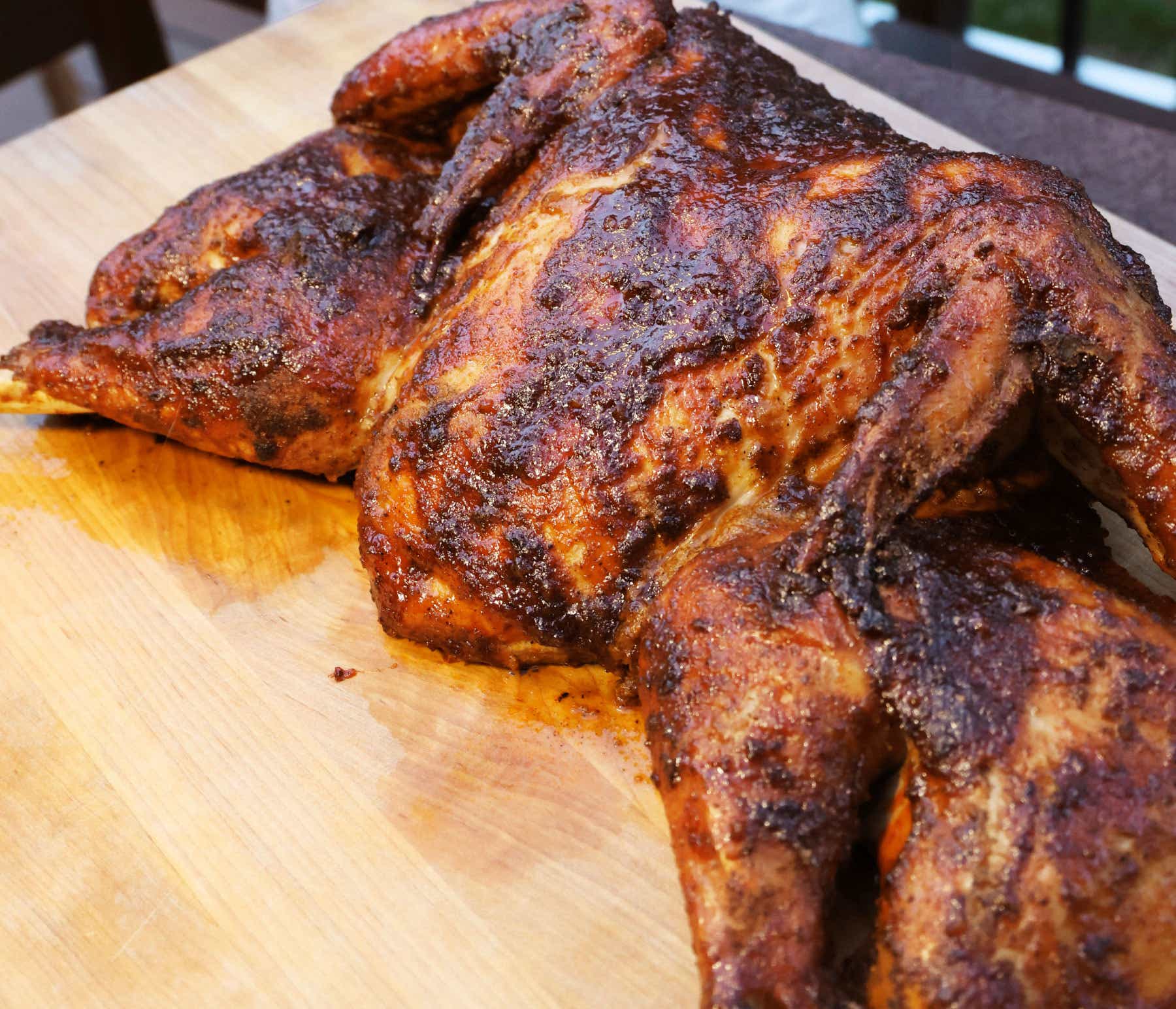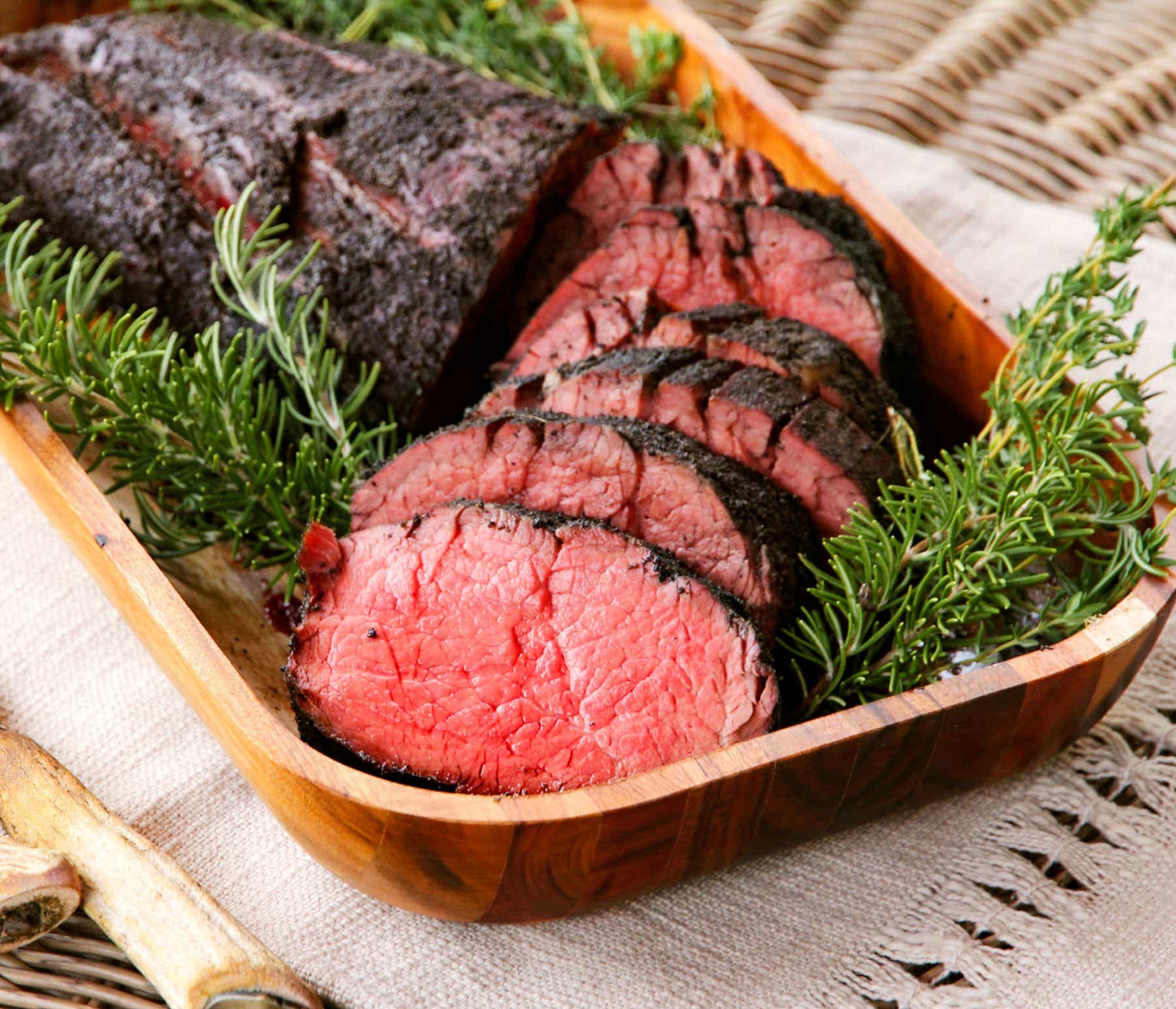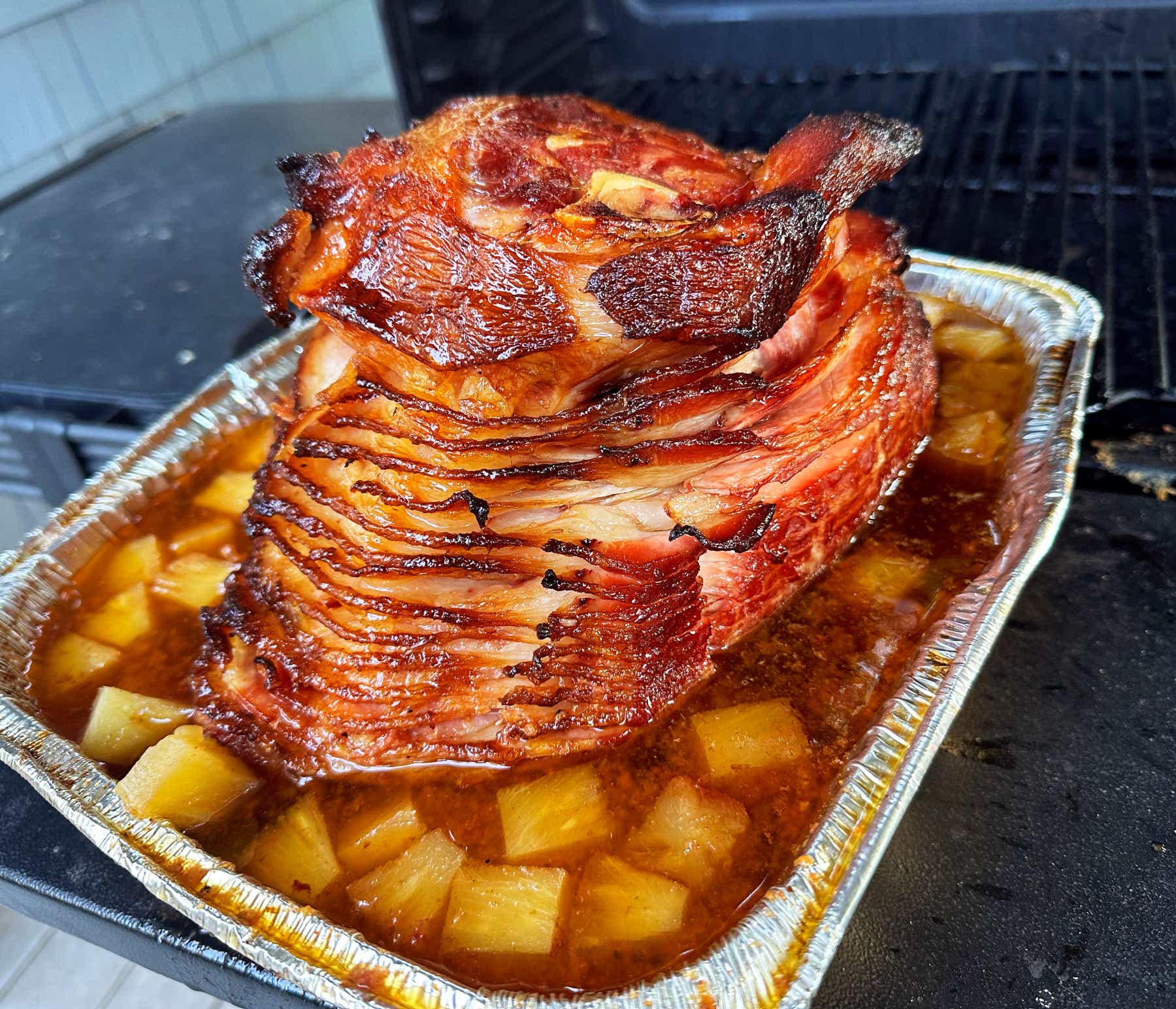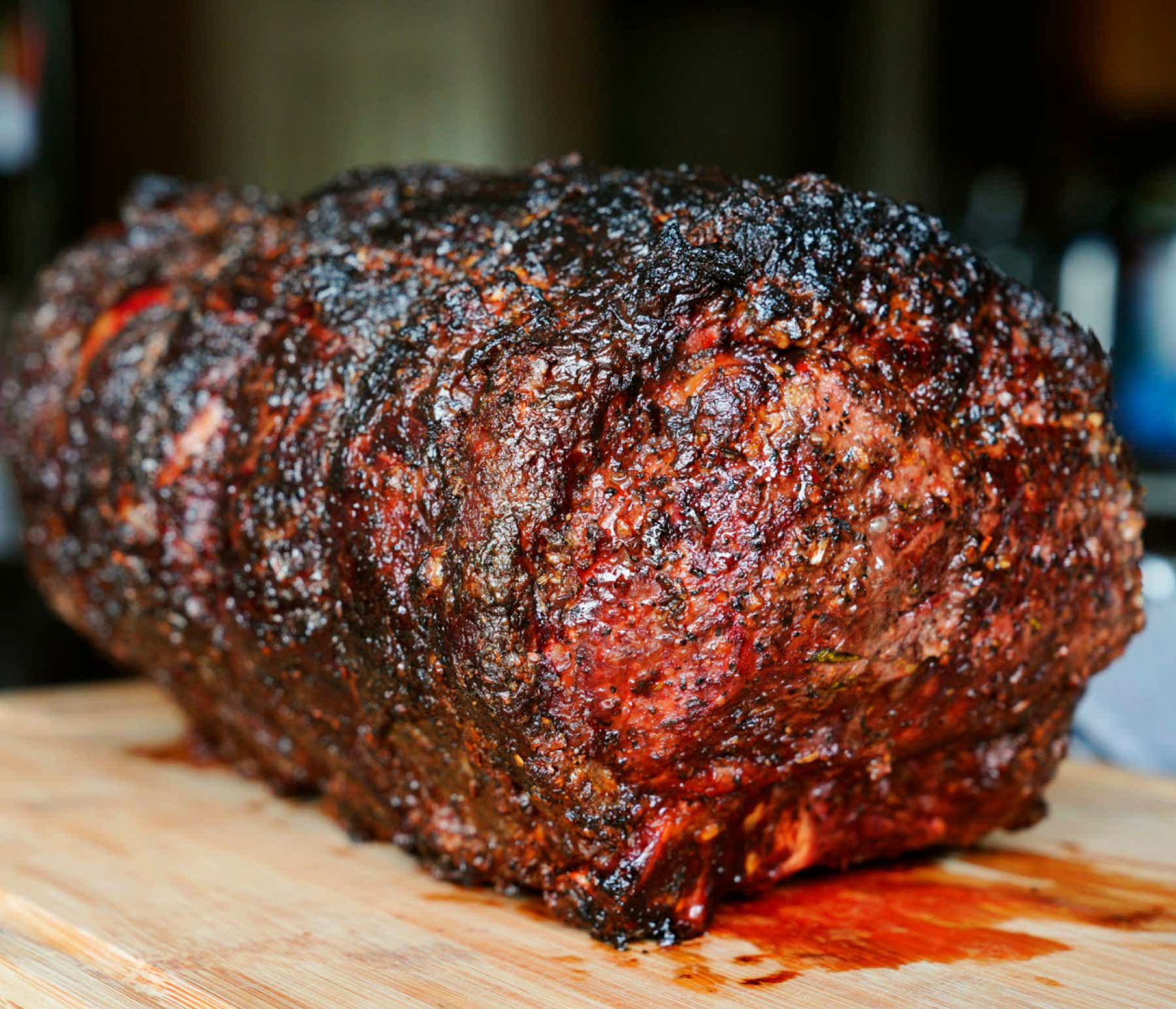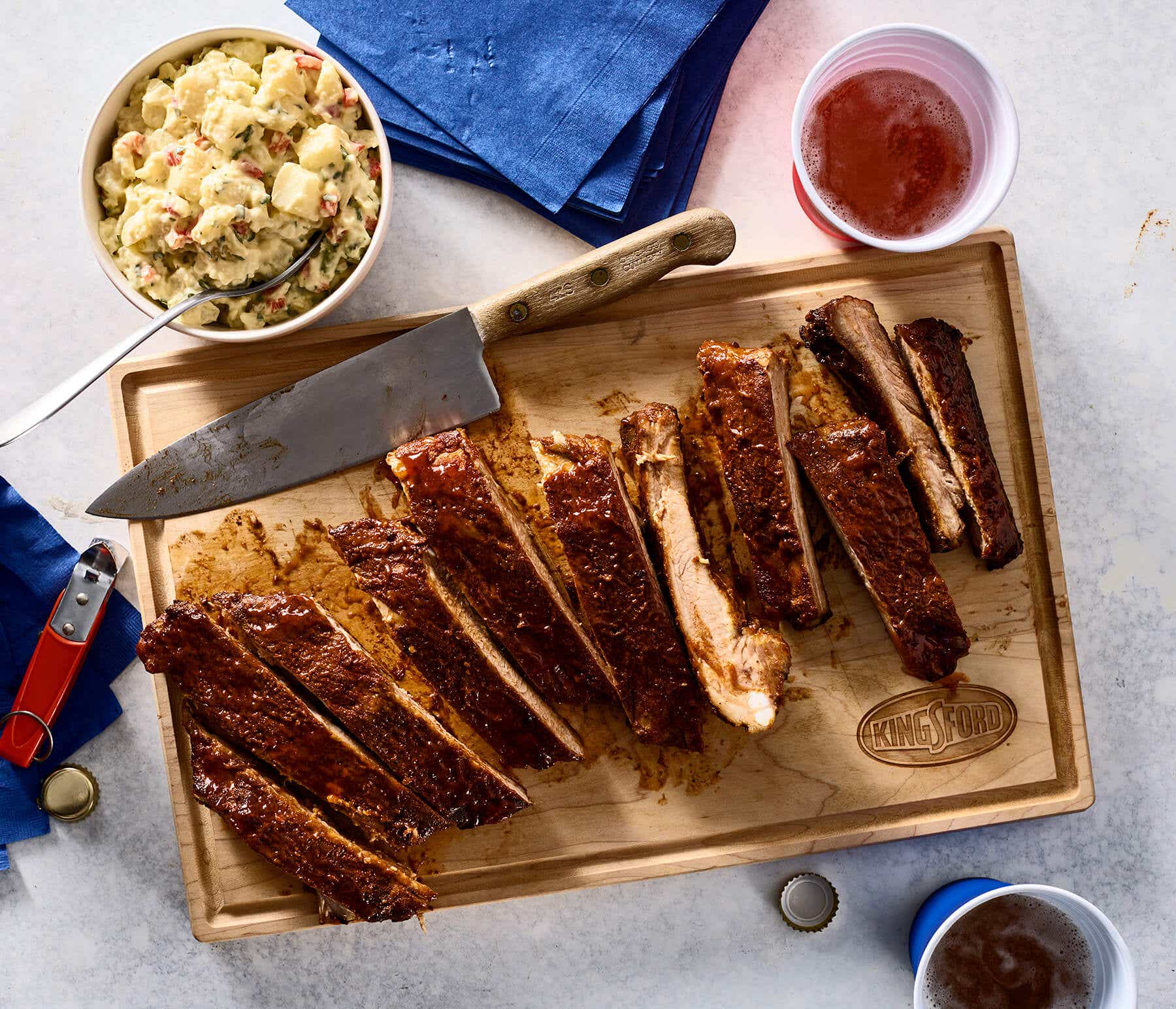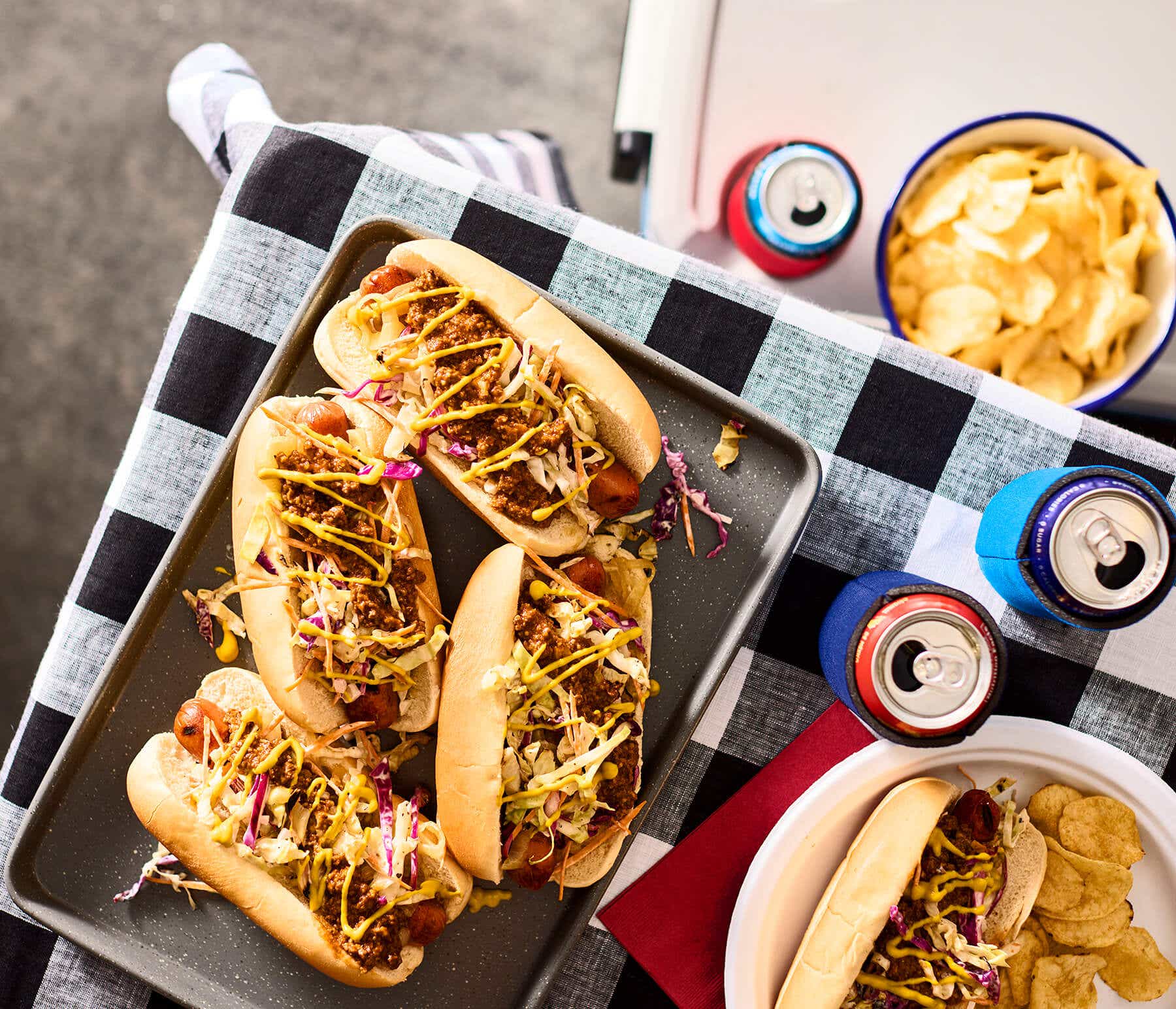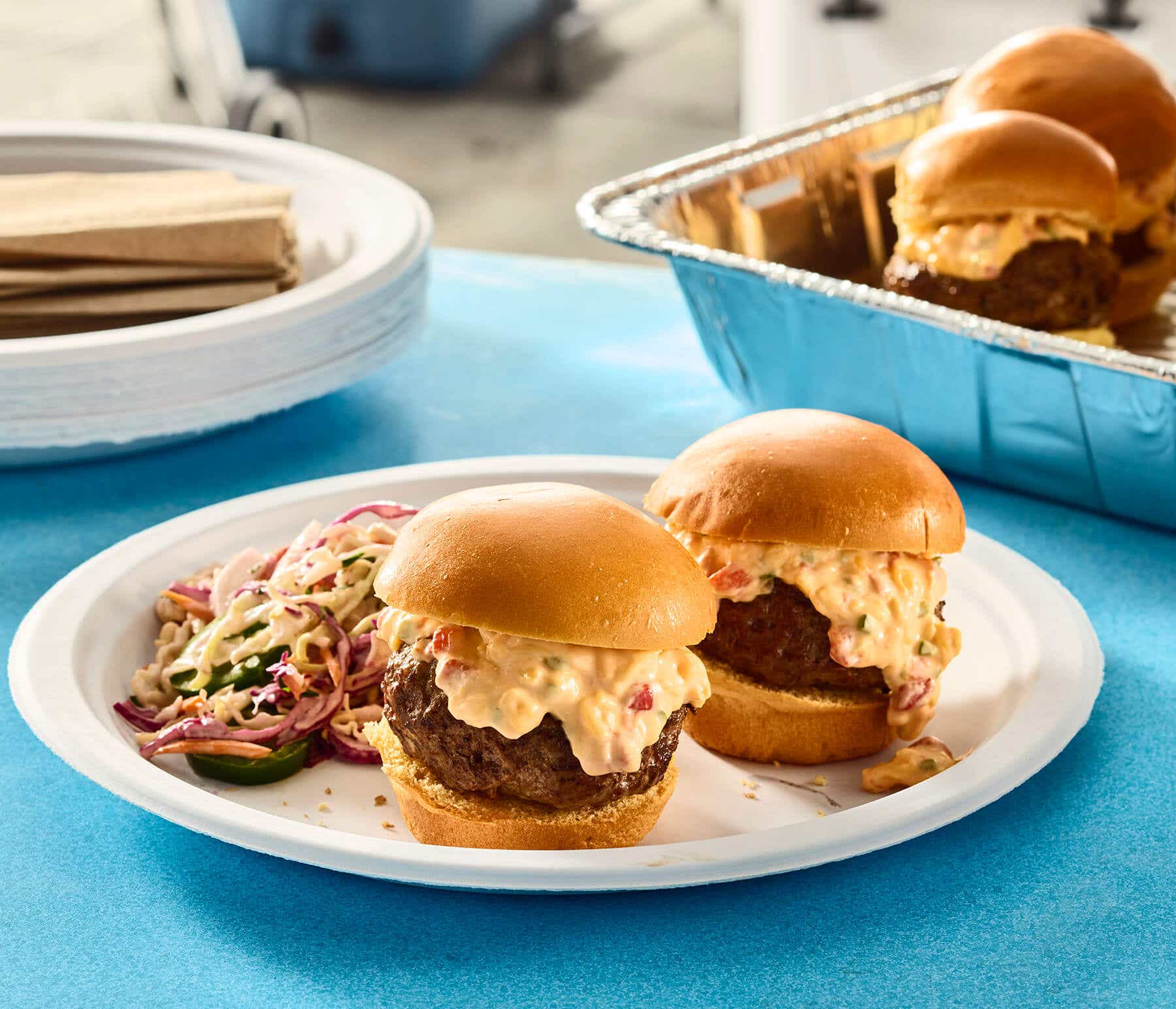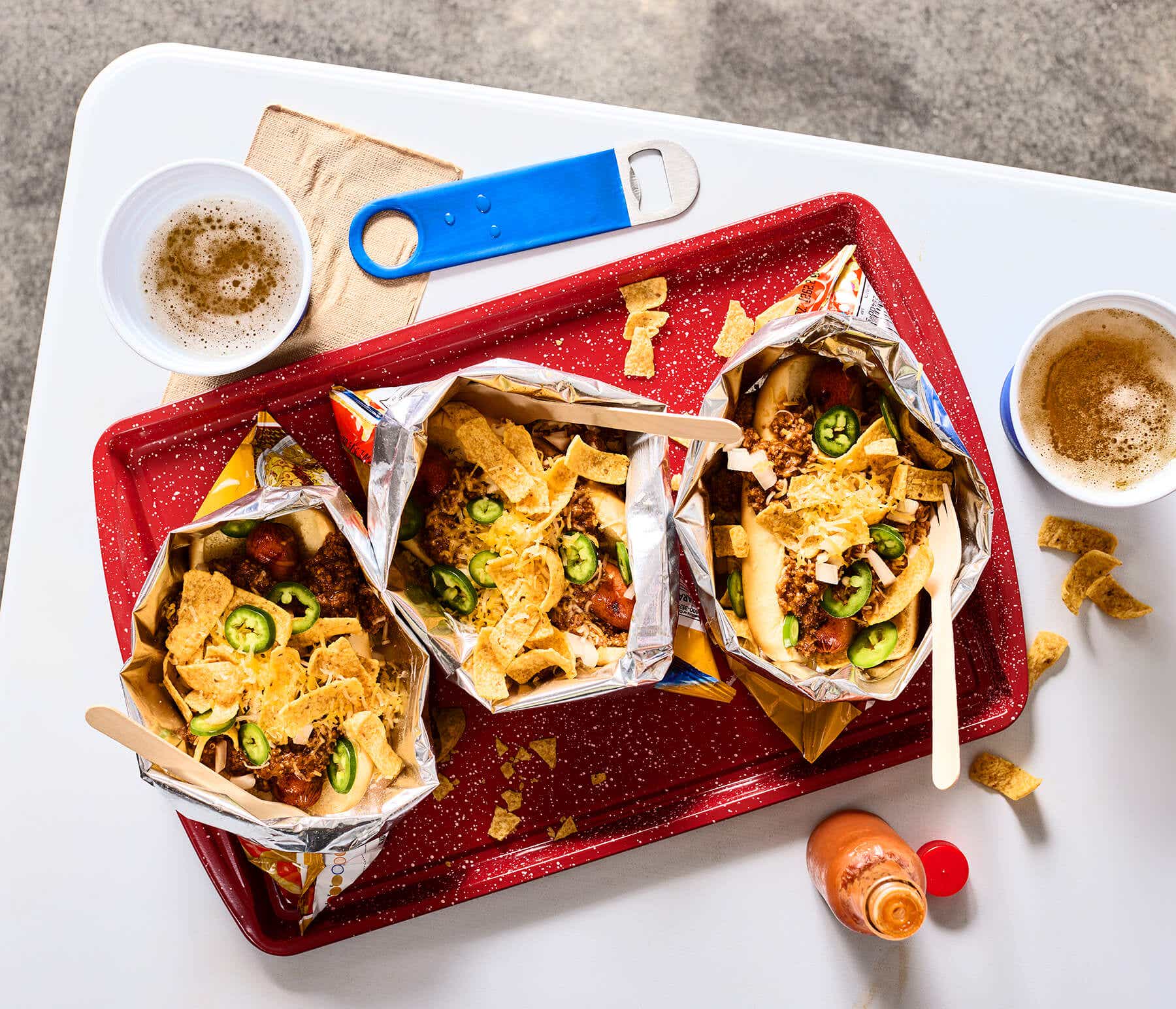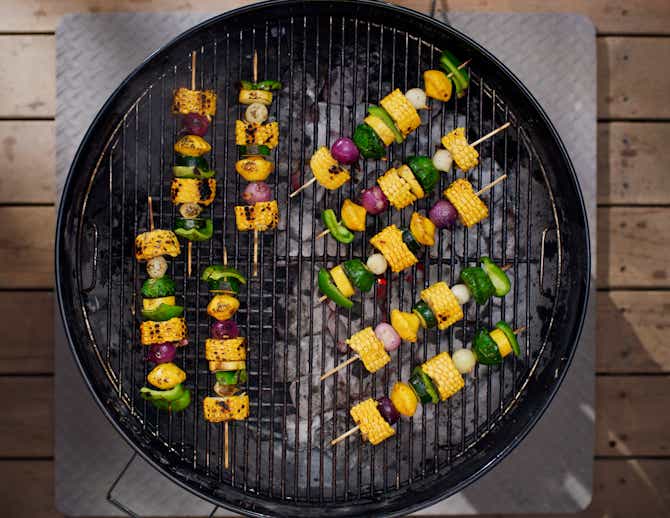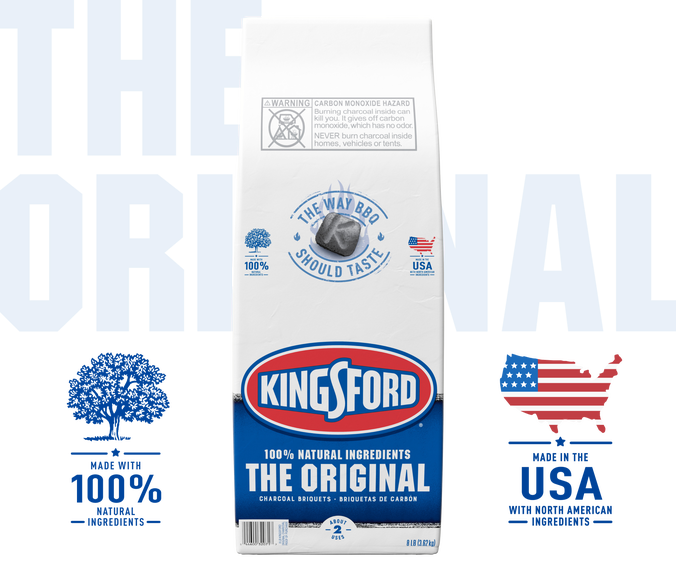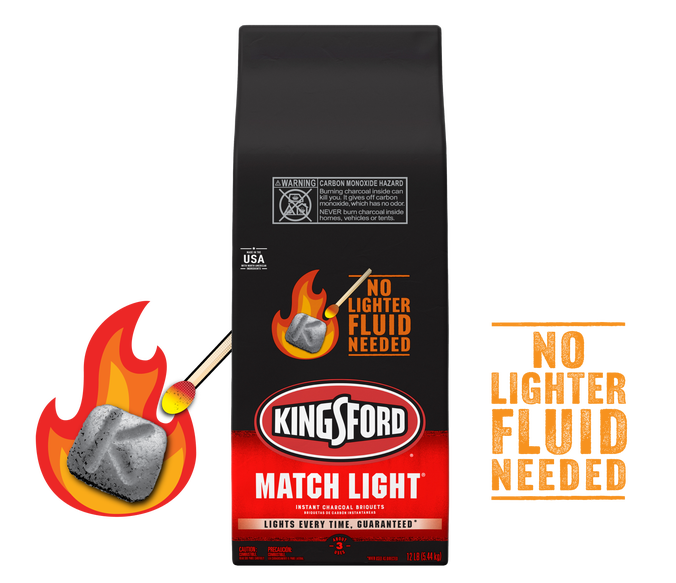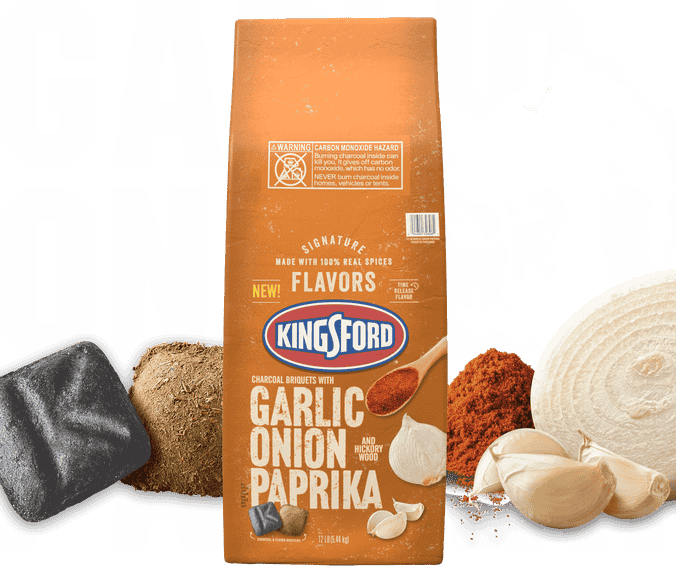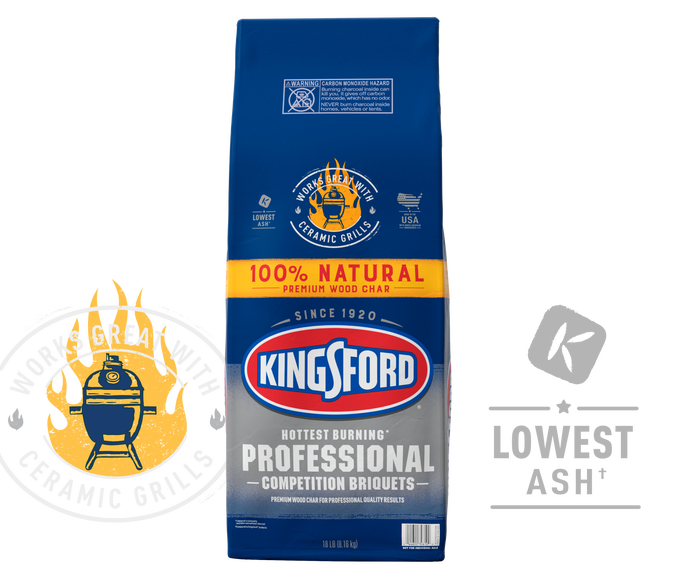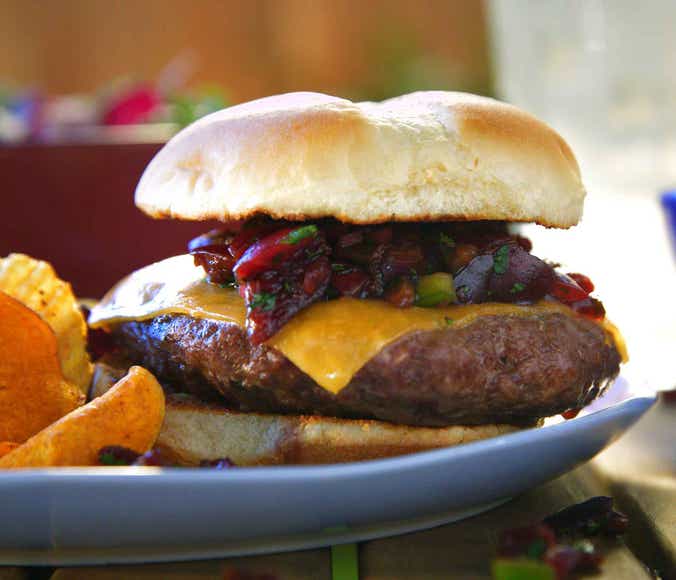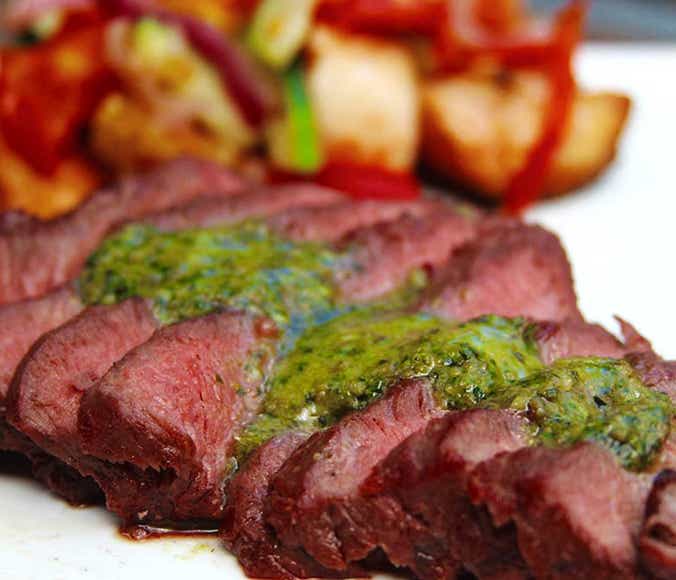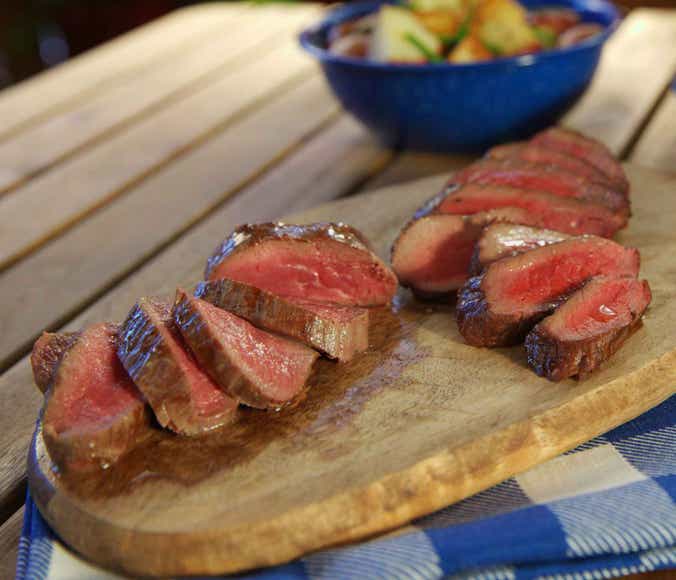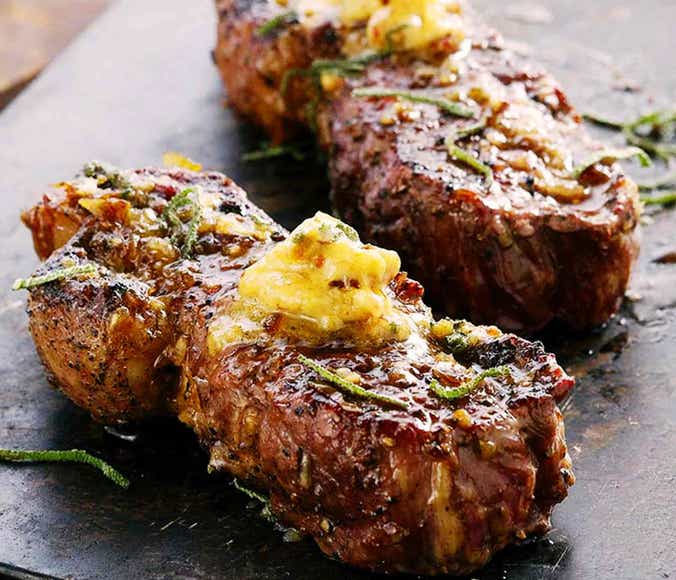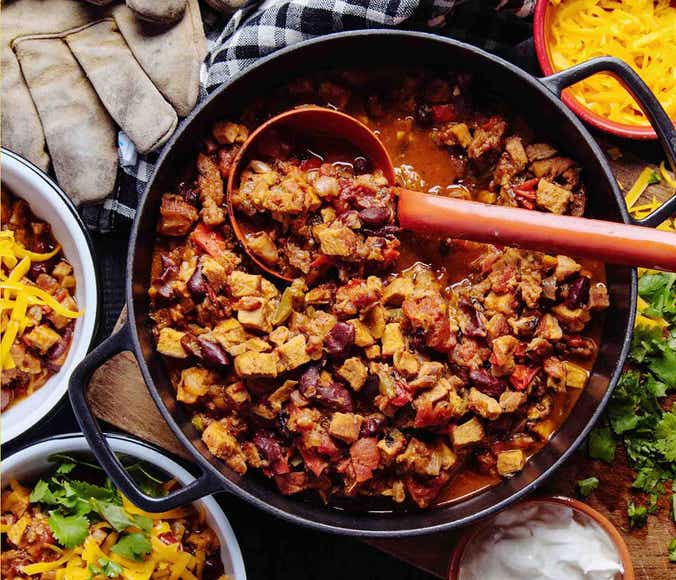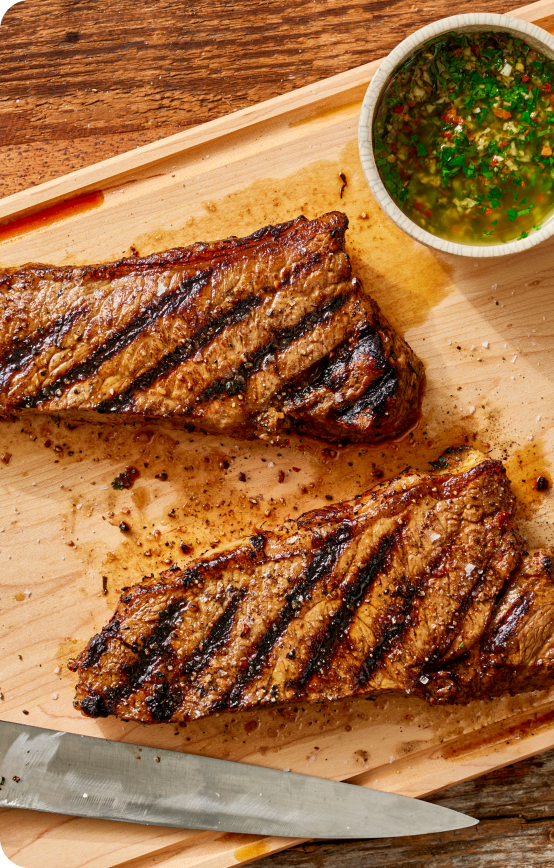HOW TO GRILL KABOBS
Whether it’s spelled kabob or kebab, grilled meat and veggies on a skewer spell delicious any day of the week. Let’s get started!
What You’ll Need
Before starting, make sure you have everything on this list. We recommend Kingsford® Original Charcoal Briquets. And don’t skip the digital meat thermometer — it’s the best way to make sure your kabobs are done.
Whether you choose beef, chicken, shrimp or vegetarian kabobs, there’s a wide variety of meats, veggies and fruits you can combine to please your family. To get you started, we’ve listed some of the classics — but there’s no need to limit yourself to these — get creative!
Be sure to stick to a single protein choice on each kabob, as grilling times for beef, chicken and shrimp will vary. Many people enjoy the mingling of flavors when cooking veggies and meat on the same kabob. Others opt to thread each kabob with a single ingredient, to ensure a perfect grilling time for each type of food.
- Kingsford® Original Charcoal Briquets
- Kingsford® Chimney Starter (Optional)
- Preferred Ignition Aid (Fire Starters, Kindling or Lighter Fluid)
- Digital Meat Thermometer
- Tongs
- Bamboo or Metal Skewers
- Paper Towels
- Cooking Oil
- Containers for Marinating
- Sharp Knife
- Pick Your Protein or Go All Veggie: Beef Sirloin or Tri-Tip Steak Boneless, Skinless Chicken Breast, Large Shrimp (21–25 Count per Pound)
- Mix and Match for Tasty Combinations: Onions, Green Onions, Mushrooms, Cherry Tomatoes, Zucchini or Summer Squash, Bell Peppers, Pineapple Chunks
- Enhance the Flavor: Your Favorite Marinade (Optional), Salt and Pepper to Taste, Olive Oil
How to Prep
- If you’re using bamboo skewers, rather than metal, an hour before grilling, soak them in water to prevent them from catching fire on the grill.
- Cut your beef or chicken into cubes or chunks 1 to 1 ½” squared. Just make sure you don’t cut your meat chunks too small, as they can overcook.
- Cut your veggies into the same size chunks as the beef or chicken — 1 to 1 ½” square pieces.
- If you choose to marinate, place your beef, chicken, shrimp or veggies into separate containers.
-
What are the Advantages of Marinating? Let’s Find Out! Marinating helps tenderize meat. It also adds flavor and extra moisture to help make tougher meats, like brisket, more succulent. The acid in the marinade, like vinegar or wine, helps soften and flavor the meat. Marinating can make leaner cuts of meat, like flank steak or skinless chicken breast, less dry. Vegetables are also more flavorful when marinated.
-
How Do I Prepare a Liquid Marinade?
- • A good rule to follow for creating a marinade is the 3-to-1 ratio: 3 parts oil and 1 part acid. For example, you would mix 1 cup of oil with ⅓ cup of acid.
- • There are a wide variety of oils that you can choose from. Vegetable, olive and canola oils are popular. Acids can include vinegar, citrus juices, like lime or lemon; yogurt or wine.
- • You should also add salt and herbs and spices. Thyme, rosemary and garlic are popular choices. A little soy sauce, Worcestershire or even sriracha will ramp up the flavor.
- • When creating your marinade, you should consider what flavors will work best with the meat, seafood or vegetables you’re preparing.
- Marinate for at least 1 hour, or even overnight.
- Once everything has marinated, it’s time to thread the kabobs.
- If you choose not to marinate, season the meat, shrimp or veggies with salt and pepper, and brush them with olive oil.
- If you’re making shrimp kabobs, it’s recommended to use 2 skewers side by side, per kabob, to prevent the shrimp from spinning.
-
What’s the Best Way to Assemble My Kabobs? It’s important not to pack the skewers too tight or too loose. If the protein and vegetables are too snug, the skewer will take too long to cook. If too loose, the protein and vegetables may overcook. Ideally, the protein and vegetables will touch each other but not be too crowded.
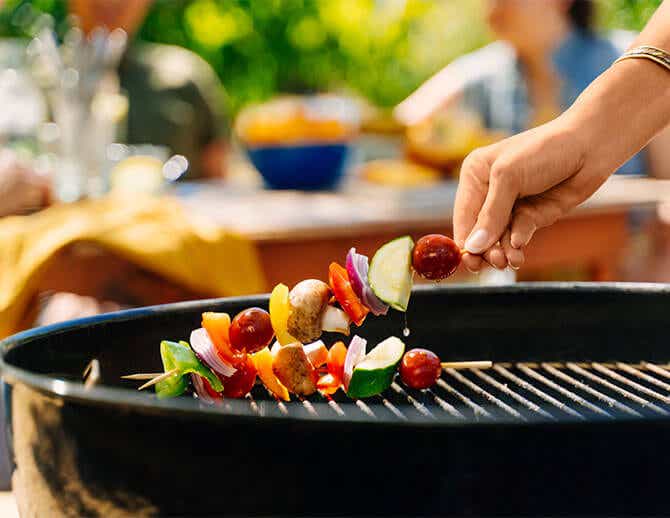
How to Prep
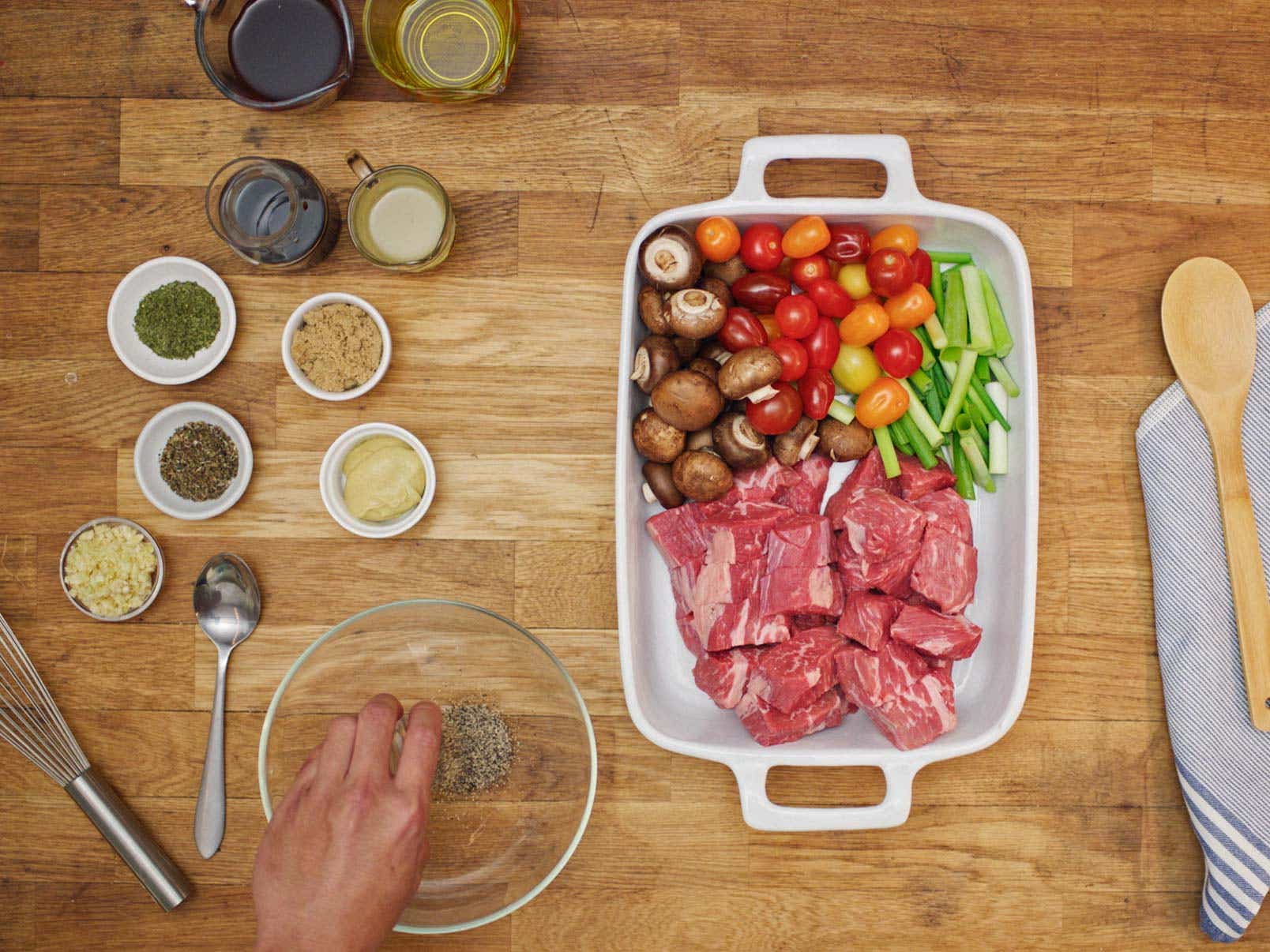
How to Build Your Fire
- Give your top grill grate a good brushing and set it aside. Pour Kingsford® Original Charcoal Briquets into a chimney — or pour them in a mound and light. Wait for coals to light fully.
- Once the charcoal turns gray with ash, arrange coals in a Two-Zone Method: coals on one side of the grill and a void on the other.
- Coals should be at Medium Heat — around 400°F. How to control the heat when grilling with charcoal.
- Add the grate and let it heat up.
-
How to Gauge Grill Heat Without a Thermometer
Carefully hold your hand about 5” to 6” above the grate, and refer to the temperature settings below:
• High Heat (450° to 550°F):
2 to 4 seconds
• Medium Heat (350° to 450°F):
5 to 6 seconds
• Low Heat (250° to 350°F):
8 to 10 seconds
Make sure your clothing doesn’t touch the grate, and always move your hand away from the heat before you feel discomfort.
When you’re at temp, put cooking oil on a folded paper towel. Grab the oiled paper towel with long-handled tongs and oil the grate thoroughly.
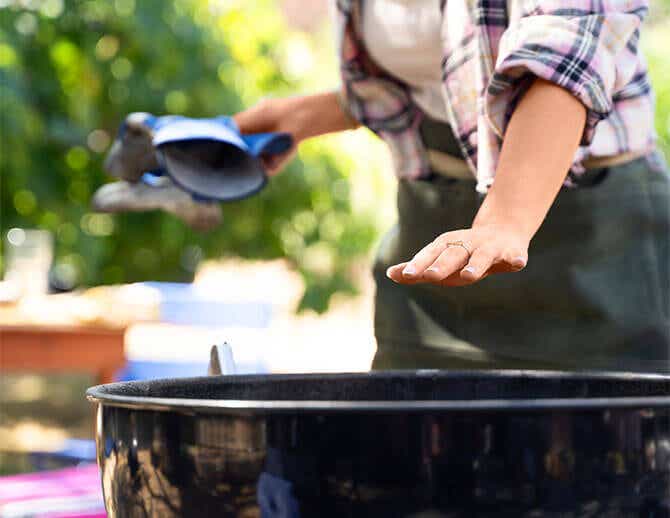
- When you’re at temp, put cooking oil on a folded paper towel. Grab the oiled paper towel with tongs and oil the grate thoroughly. This will help prevent the kabobs from sticking to the grate. For more details, see How to Prep a Charcoal Grill.
-
Here’s How to Handle a Flare-Up
Flare-ups happen to even the most skilled grill masters. Flare-ups are just fat rendering and dripping onto the coals. With a long-handled, metal spatula, simply move your food to the other side of the grate, shut the bottom dampers, and close the grill lid until the flames subside.
Credit: World Champion Pitmaster Chris Lilly of Big Bob Gibson Bar-B-Q.
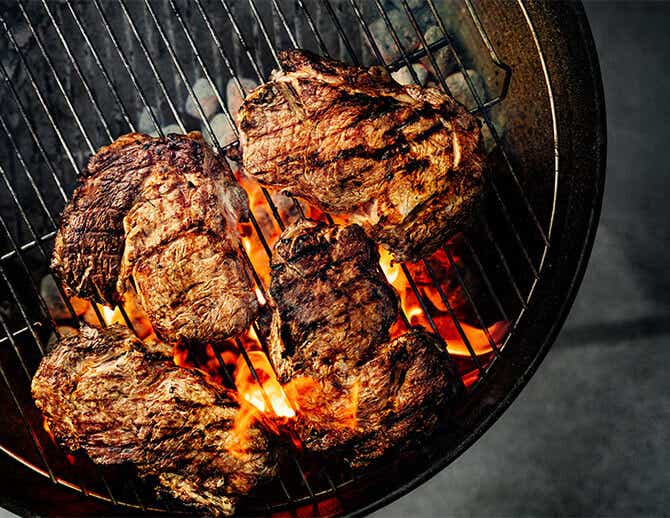
How to Build Your Fire
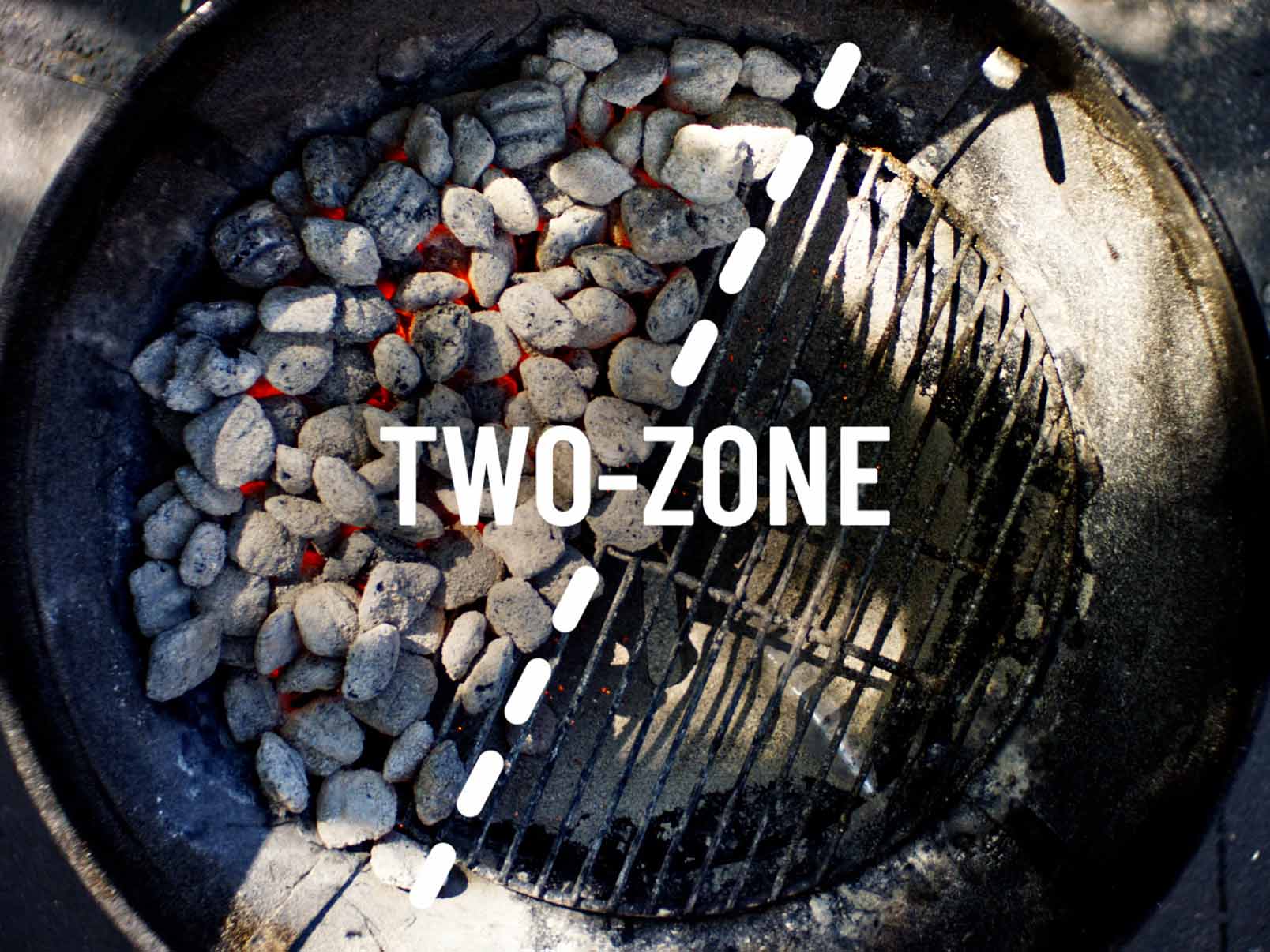
Get Grilling
- Place your kabobs directly over the coals on the hot side of the two-zone fire, perpendicular to the grates. Rotate your skewers to grill all sides.
- Flare-ups will happen. Don’t worry!
-
Here’s How to Handle a Flare-Up
Flare-ups happen to even the most skilled grill masters. Flare-ups are just fat rendering and dripping onto the coals. With a long-handled, metal spatula, simply move your food to the other side of the grate, shut the bottom dampers, and close the grill lid until the flames subside.
Credit: World Champion Pitmaster Chris Lilly of Big Bob Gibson Bar-B-Q.

Get Grilling
Beef Kabobs
- Once the beef is browned, move your skewers to the cooler side of the grate to finish cooking. Beef is safely cooked when it reaches an internal temperature of 145°F on a digital meat thermometer. Beef kabobs typically take about 7–8 minutes total cooking time, depending on the size of your beef chunks.
-
How Done Is My Steak? Let’s Find Out * USDA Safety Guidelines recommend cooking steak to the mediumtemp of 145°F to make sure any harmful bacteria are destroyed.
** Cooking times are approximate and based on a 1” steak, including sear time.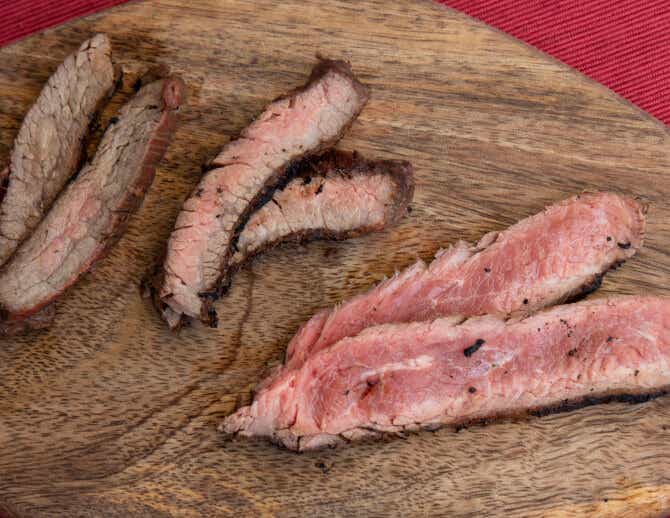
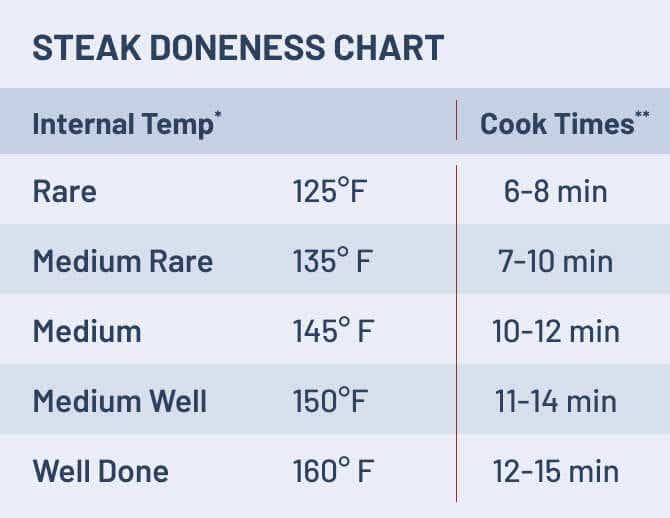
Beef Kabobs
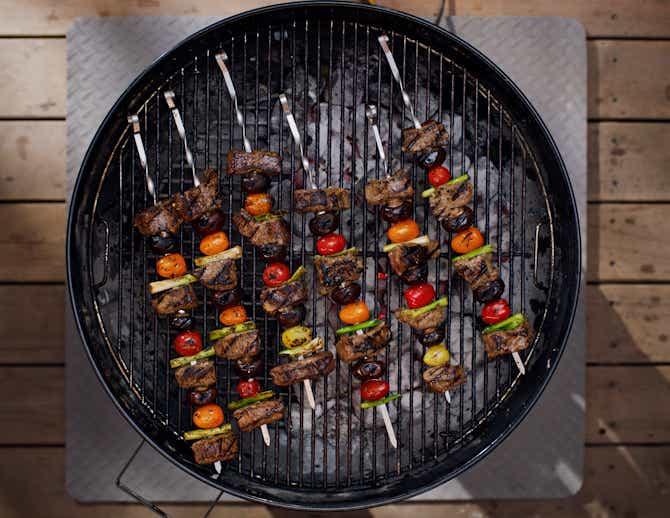
Chicken Kabobs
- Your chicken kabobs should be rotated to brown on all sides, then moved to the cooler side of the grill to finish cooking through. Chicken is safely cooked when it reaches an internal temperature of 165°F on a digital meat thermometer. Chicken kabobs typically take about 8 minutes to grill for white meat and 9 minutes for dark meat.
Chicken Kabobs
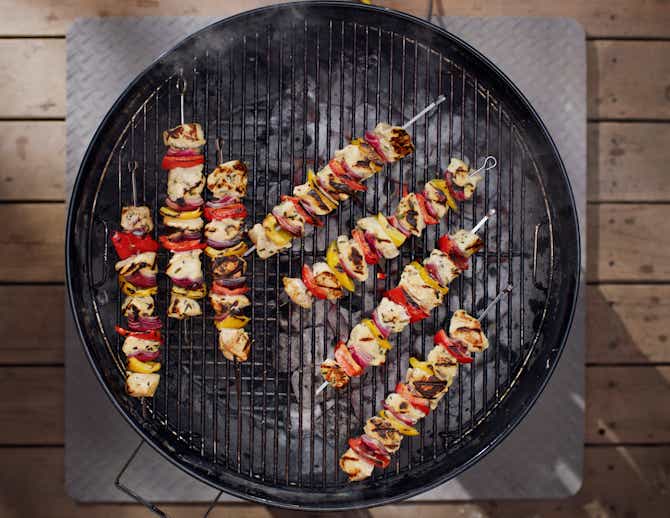
Shrimp Kabobs
- These will cook quickly. Grill the shrimp for 2 to 3 minutes per side, until they’re slightly pink with opaque flesh. When the shrimp reach an internal temperature of 145°F on a digital meat thermometer, they’re done. When checking the internal temperature, be sure to stick the tip of the thermometer into the thickest part of the shrimp.
Shrimp Kabobs
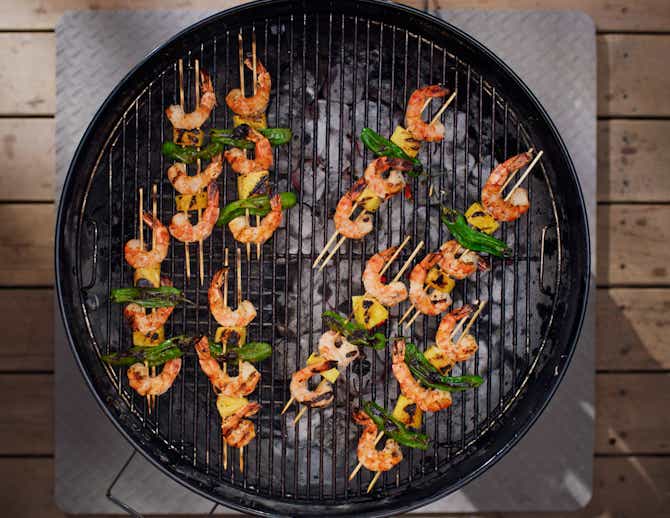
The Finish
- You can serve your kabobs immediately. Unlike larger cuts of meat, there is no need to let your kabobs rest. Serve and enjoy!
For safe meat and other food preparation, reference the USDA website.
The Finish
